Author Biographies 15
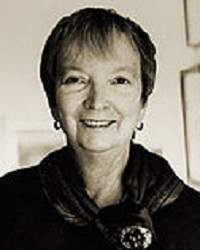 Madeleine L’Engle
Madeleine L’Engle
1918-2007
Madeleine L’Engle Camp (November 29, 1918-September 6, 2007) was an American writer best known for her young-adult fiction, particularly the Newbery Medal-winning A Wrinkle in Time and its sequels: A Wind in the Door, A Swiftly Tilting Planet, Many Waters and An Acceptable Time. Her works reflect both her Christian faith and her strong interest in modern science.
L’Engle was born in New York City and named after her great-grandmother, Madeleine L’Engle. L’Engle attended Smith College from 1937 to 1941. After graduating cum laude from Smith, she moved to an apartment in New York City. In 1942, she met actor Hugh Franklin when she appeared in the play, The Cherry Orchard, by Anton Chekhov. L’Engle married Franklin on January 26, 1946, the year after the publication of her first novel, The Small Rain. The couple’s first daughter, Josephine, was born in 1947.
In 1959, L’Engle first had the idea for her most famous novel, A Wrinkle in Time. She completed the book by 1960, but more than two dozen publishers rejected the story before Farrar, Straus and Giroux finally published it in 1962.
From 1960 to 1966 (and again in 1989 and 1990), L’Engle taught at St. Hilda’s & St. Hugh’s School in New York. In 1965, she became a volunteer librarian at the Cathedral of St. John the Divine, also in New York. She later served for many years as writer-in-residence at the Cathedral, generally spending her winters in New York and her summers at Crosswicks.
During the 1960s, 1970s and 1980s, L’Engle wrote dozens of books for children and adults. One of her books for adults, Two-Part Invention, was a memoir of her marriage, completed after her husband’s death from cancer on September 26, 1986.
Madeleine L’Engle died of natural causes at Rose Haven, a nursing facility close to her home in Litchfield, Connecticut, on September 6, 2007.
Source: http://en.wikipedia.org/wiki/Madeleine_L%27Engle
 Bibliography
Bibliography
Press your browser’s BACK button to return to the previous page.
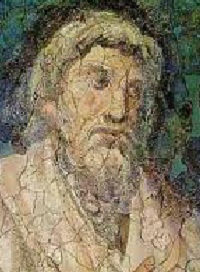 Lactantius
Lactantius
240-320 AD
Lucius Caelius (or Caecilius) Firmianus Lactantius was an early Christian author (c. 240-c. 320).
Lactantius, a Latin-speaking native of North Africa, was a pupil of Arnobius and taught rhetoric in various cities of the Eastern Roman Empire, ending in Constantinople. He wrote apologetic works explaining Christianity in terms that would be palatable to educated people who still practiced the traditional religions of the Empire, while defending Christian beliefs against the criticisms of Hellene philosophers. His Divinae Institutiones (Divine Institutions) is an early example of a systematic presentation of Christian thought. He was considered somewhat heretical after his death, but Renaissance humanists took a renewed interest in him, more for his elaborately rhetorical Latin style than for his theology.
Lactantius was not born into a Christian family. In his early life, he taught rhetoric in his native place, which may have been Cirta in Numidia, where an inscription mentions a certain “L. Caecilius Firmianus.”
Lactantius had a successful public career at first. At the request of Roman Emperor Diocletian, he became an official professor of rhetoric in Nicomedia, the voyage from Africa described in his poem, “Hodoeporicum.” Having converted to Christianity, he would have been dismissed after the publication of Diocletian’s first “Edict against the Christians” (February 24, 303) and, as a Latin rhetor, he lived in poverty and eked out a living by writing until Constantine I became his patron.
The new emperor appointed the aged scholar in 311 or 313. The friendship of the Emperor Constantine raised him from penury and he became tutor in Latin to his son, Crispus, whom Lactantius may have followed to Trier in 317, when Crispus was made Caesar (lesser co-emperor) and sent to the city.
Crispus was put to death in 326, but when Lactantius died and in what circumstances is not known.
Source: http://en.wikipedia.org/wiki/Lactantius
 Bibliography
Bibliography
Press your browser’s BACK button to return to the previous page.
 Diogenes Laertius
Diogenes Laertius
200s AD
Diogenes Laertius (c. 3rd century) was a biographer of the Greek philosophers. His surviving Lives and Opinions of Eminent Philosophers is one of the principal surviving sources for the history of Greek philosophy.
Nothing is definitively known about his life. He must have lived after Sextus Empiricus (c. 200 AD), whom he mentions, and before Stephanus of Byzantium and Sopater (c. 500 AD), who quote him. His work makes no mention of Neoplatonism, even though it is addressed to a woman who was “an enthusiastic Platonist.” It is probable that he flourished in the first half of the 3rd century, during the reign of Alexander Severus (222-235) and his successors.
The precise form of his name is uncertain. In the ancient manuscripts of his work, he is invariably referred to as “Laertius Diogenes,” and this form of the name is repeated by Sopater and the Suda.
Source: http://en.wikipedia.org/wiki/Diogenes_La%C3%ABrtius
 Bibliography
Bibliography
Press your browser’s BACK button to return to the previous page.
 Jhumpa Lahiri
Jhumpa Lahiri
1967-
Jhumpa Lahiri (born on July 11, 1967) is a Bengali-American author. Lahiri’s debut short story collection, Interpreter of Maladies (1999), won the 2000 Pulitzer Prize for Fiction and her first novel, The Namesake (2003), was adapted into the popular film of the same name.
Lahiri was born in London, the daughter of Bengali Indian immigrants. Her family moved to the United States when she was three. Lahiri grew up in Kingston, Rhode Island, where her father, Amar Lahiri, worked as a librarian at the University of Rhode Island. Lahiri graduated from South Kingstown High School and received her B.A. in English literature from Barnard College in 1989.
Lahiri then received multiple degrees from Boston University: an M.A. in English, M.F.A. in Creative Writing, M.A. in Comparative Literature and a Ph.D in Renaissance Studies. She took a fellowship at Provincetown’s Fine Arts Work Center, which lasted for the next two years (1997-1998). Lahiri has taught creative writing at Boston University and the Rhode Island School of Design.
Lahiri’s early short stories faced rejection from publishers “for years.” Her debut short story collection, Interpreter of Maladies, was finally released in 1999. In 2003, Lahiri published The Namesake, her first novel. Lahiri’s second collection of short stories, Unaccustomed Earth, was released on April 1, 2008.
Lahiri has also had a distinguished relationship with The New Yorker magazine, in which she has published a number of her short stories, mostly fiction, and a few nonfiction pieces, including: “The Long Way Home” and “Cooking Lessons”, a story about the importance of food in Lahiri’s relationship with her mother.
Since 2005, Lahiri has been a vice president of the PEN American Center, an organization designed to promote friendship and intellectual cooperation among writers.
In February 2010, she was appointed a member of the Committee on the Arts and Humanities.
Source: https://en.wikipedia.org/wiki/Jhumpa_Lahiri
 Bibliography
Bibliography
Press your browser’s BACK button to return to the previous page.
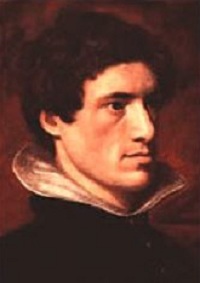 Charles Lamb
Charles Lamb
1775-1834
Charles Lamb (London, February 10, 1775-Edmonton, December 27, 1834) was an English essayist best known for his Essays of Elia and for the children’s book, Tales from Shakespeare, which he produced with his sister, Mary Lamb (1764-1847). Lamb was the son of Elizabeth Field and John Lamb.
Little is known about his life before the age of seven. By October 1782, Lamb was enrolled in Christ’s Hospital, a charity boarding school chartered by King Edward VI in 1552.
Lamb suffered from a stutter and this “inconquerable impediment” in his speech deprived him of Grecian status at Christ’s Hospital, thus disqualifying him for a clerical career. While Coleridge and other scholarly boys were able to go on to Cambridge, Lamb left school at 14 and was forced to find a more prosaic career. On April 5, 1792, he went to work in the Accountant’s Office for the British East India Company. Charles would continue to work there for 25 years, until his retirement with pension.
Lamb and his sister, Mary, both suffered periods of mental illness. He spent six weeks in a psychiatric hospital during 1795. He was, however, already making his name as a poet.
Lamb’s first publication was in 1796, when four sonnets by “Mr. Charles Lamb of the India House” appeared in Coleridge’s Poems on Various Subjects. In 1797, he contributed additional blank verse to the second edition and met the Wordsworths, William and Dorothy, on his short summer holiday with Coleridge at Nether Stowey, thereby also striking up a lifelong friendship with Wordsworth. In London, Lamb became familiar with a group of young writers who favored political reform, including Percy Bysshe Shelley, William Hazlitt and Leigh Hunt.
Lamb continued to clerk for the East India Company and doubled as a writer in various genres, his tragedy, John Woodvil, being published in 1802. His farce, Mr. H, was performed at Drury Lane in 1807, where it was roundly booed. In the same year, Tales from Shakespeare (Charles handled the tragedies; his sister, Mary, the comedies) was published, and became a bestseller for William Godwin’s Children’s Library.
His collected essays, Essays of Elia, were published in 1823 (“Elia” being the pen name Lamb used as a contributor to The London Magazine). A further collection was published 10 years or so later, shortly before Lamb’s death. He died of a streptococcal infection, erysipelas, contracted from a minor graze on his face sustained after slipping in the street, on December 27, 1834. He was 59.
Source: http://en.wikipedia.org/wiki/Charles_Lamb_%28writer%29
 Bibliography
Bibliography
Press your browser’s BACK button to return to the previous page.
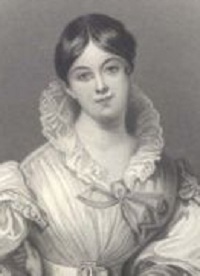 Letitia Elizabeth Landon
Letitia Elizabeth Landon
1802-1838
Letitia Elizabeth Landon (August 14, 1802-October 15, 1838) was an English poet and novelist, better known by her initials, L.E.L. She was born in Chelsea, London, to John Landon and Catherine Jane, nee Bishop. A precocious child, Landon learned to read as a toddler; an invalid neighbor would scatter letter tiles on the floor and reward young Letitia for reading and, according to her father, “she used to bring home many rewards.”
William Jerdan, editor of The Literary Gazette, took notice of the young Landon when he saw her coming down the street, “trundling a hoop with one hand, and holding in the other a book of poems, of which she was catching a glimpse between the agitating course of her evolutions.” Jerdan encouraged Landon’s poetic endeavors and her first poem was published under the single initial “L” in The Gazette in 1820, when Landon was 18. The following year, with financial support from her grandmother, Landon published a book of poetry, The Fate of Adelaide, under her full name. The book met with little critical notice but sold well. The same month that The Fate of Adelaide appeared, Landon published two poems under the initials “L.E.L.” in The Gazette; these poems, and the initials under which they were published, attracted much discussion and speculation.
Landon served as The Gazette’s chief reviewer as she continued to write poetry; her second collection, The Improvisatrice, appeared in 1824. Landon’s father died later that year and Landon was forced to use her writing to support both herself and her family; contemporaries saw this profit-motive as detrimental to the quality of Landon’s work.
By 1826, Landon’s high reputation began to suffer as rumors began to appear in the gutter press that she had had affairs or secretly borne children. Landon continued, however, to publish poetry and, in 1831, she published her first novel, Romance and Reality.
In October 1836, Landon met George MacLean, governor of the Gold Coast (now Ghana), at a dinner party, and the two began a relationship. MacLean, however, moved to Scotland early the following year, to the surprise and distress of Landon and her friends. After much prodding, MacLean returned to England and he and Landon were married shortly thereafter, on June 7, 1838. The marriage was kept secret and Landon spent the first month of it living with friends. In early July, the couple sailed for Cape Coast, where they arrived on August 16. Two months later, on October 15, Landon was found dead, a bottle of prussic acid in her hand.
Source: http://en.wikipedia.org/wiki/Letitia_Elizabeth_Landon
 Bibliography
Bibliography
Press your browser’s BACK button to return to the previous page.
 Walter Savage Landor
Walter Savage Landor
1775-1864
Walter Savage Landor (January 30, 1775-September 17, 1864) was an English writer and poet. His best-known works were the prose volume, Imaginary Conversations, and the poem, “Rose Aylmer,” but the critical acclaim he received from contemporary poets and reviewers was not matched by public popularity. As remarkable as his work was, it was equaled by his rumbustious character and lively temperament.
In a long and active life of 89 years, Landor produced a considerable amount of work in various genres. This can perhaps be classified into four main areas – prose, lyric poetry, political writings (including epigrams) and Latin.
Landor’s prose is best represented by the Imaginary Conversations. He drew on a vast array of historical characters from Greek philosophers to contemporary writers and composed conversations between pairs of characters that covered areas of philosophy, politics, romance and many other topics. These exercises proved a more successful application of Landor’s natural ability for writing dialogue than his plays. Although these have many quotable passages, the overall effect suffered because he never learned the art of drama.
Landor wrote much sensitive and beautiful poetry. The love poems were inspired by a succession of female romantic ideals – Ione, Ianthe, Rose Aylmer and Rose Paynter. Equally sensitive are his “domestic” poems about his sister and his children.
In the course of his career Landor wrote for various journals on a range of topics that interested him, from anti-Pitt politics to the unification of Italy. He was also a master of the epigram, which he used to good effect and wrote satirically to avenge himself on politicians and other people who upset him.
Landor wrote more than 300 Latin poems, political tracts and essays, but these have generally been ignored in the collections of his work. Landor found Latin useful for expressing things that might otherwise have been “indecent or unattractive,” as he put it, and as a cover for libelous material. Fellow classical scholars of the time put Landor’s Latin work on a par with his English writing.
Landor’s writing often landed him on the wrong side of the laws of libel, and even his refuge in Latin proved of no avail in Italy. Many times his friends had to come to his aid in smoothing the ruffled feathers of his opponents or in encouraging him to moderate his behavior. His friends were equally active in the desperate attempts to get his work published, where he offended or felt cheated by a succession of publishers who found his work either unsellable or unpublishable. He was repeatedly involved in legal disputes with his neighbors, whether in England or Italy.
Source: http://en.wikipedia.org/wiki/Walter_Savage_Landor
 Bibliography
Bibliography
Press your browser’s BACK button to return to the previous page.
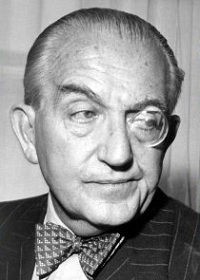 Fritz Lang
Fritz Lang
1890-1976
Fritz Lang, born on December 5, 1890, in Vienna, Austria, was a motion-picture director whose films, dealing with fate and man’s inevitable working out of his destiny, are considered masterpieces of visual composition.
The son of an architect, Lang briefly studied architecture at Vienna’s Technical University, then traveled widely before settling for a time in Paris as a painter. While recovering from wounds suffered in the service of Austria during World War I, he started to write screenplays; after the war, he went to Berlin to work with Erich Pommer, a German film producer.
His first successful film as a director was Der mde Tod (1921, Between Worlds). Dr. Mabuse, der Spieler (1922, Dr. Mabuse) studied a criminal mastermind; Die Nibelungen (1924, released in two parts in the United States as Siegfried and Kriemhild’s Revenge) was based on the early 13th century German poem; Metropolis (1926) was an Expressionist vision of the future; and M (1931), his most famous German film, explored the compulsion to murder. Das Testament des Dr. Mabuse (1932, The Last Will of Dr. Mabuse), in which a madman speaks Nazi philosophy, attracted the attention of Joseph Goebbels, the Nazis’ chief propagandist, who invited Lang to supervise German films. Lang left for Paris the same evening and later moved to the United States.
Fury (1936), a study of a lynch mob, is his most-praised American film. Others include: You Only Live Once (1937), Western Union (1941), Hangmen Also Die (1943), Scarlet Street (1945), Clash by Night (1952), Rancho Notorious (1952), Moonfleet (1955) and Beyond a Reasonable Doubt (1956).
He died on August 2, 1976, in Los Angeles, Calif.
Source: http://www.biography.com/people/fritz-lang-9372903
 Bibliography
Bibliography
Press your browser’s BACK button to return to the previous page.
 William Langewiesche
William Langewiesche
1955-
William Langewiesche (born June 12, 1955) is an American author and journalist and has been a professional airplane pilot for many years.
Langewiesche is currently the international correspondent for the magazine Vanity Fair, a position he has held since 2006. Prior to that, he was the national correspondent for The Atlantic Monthly magazine, where he was nominated for eight consecutive National Magazine Awards. He has written articles covering a wide range of topics, from shipbreaking, wine critics, the Columbia shuttle disaster, modern ocean piracy, nuclear proliferation and the World Trade Center cleanup.
Source: http://en.wikipedia.org/wiki/William_Langewiesche
 Bibliography
Bibliography
Press your browser’s BACK button to return to the previous page.
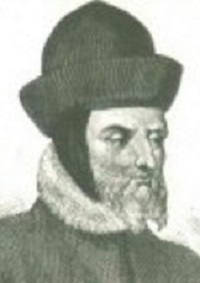 William Langland
William Langland
c. 1332-c. 1400
William Langland (c. 1332-c. 1400) was the putative author of Piers Plowman. He was born probably at Ledbury near the Welsh marshes and may have gone to school at Great Malvern Priory. Although he took minor orders, he never became a priest. Later, in London, he apparently eked out his living by singing Masses and copying documents.
His great work, Piers Plowman or, more precisely, The Vision of William concerning Piers the Plowman, is an allegorical poem in unrhymed alliterative verse, regarded as the greatest Middle English poem prior to Chaucer. It is both a social satire and a vision of the simple Christian life. The poem consists of three dream visions: (1) in which Holy Church and Lady Meed (representing the temptation of riches) woo the dreamer; (2) in which Piers leads a crowd of penitents in search of St. Truth; and (3) the vision of Do-well (the practice of the virtues), Do-bet (in which Piers becomes the Good Samaritan practicing charity) and Do-best (in which the simple plowman is identified with Jesus himself).
The 47 extant manuscripts of the poem fall into three groups: the A-text (2,567 lines, c. 1362); the B-text, which greatly expands the third vision (7,242 lines, c. 1376-77); and the C-text, a revision of B (7,357 lines, between 1393 and 1398). Most scholars now believe that at least the A- and B-texts are the work of William Langland, whose biography has been deduced from passages in the poem. However, some still hold that the poem is the work of two or even five authors.
Source: http://www.infoplease.com/ce6/people/A0828809.html
 Bibliography
Bibliography
Press your browser’s BACK button to return to the previous page.
 Sidney Lanier
Sidney Lanier
1842-1881
Sidney Lanier (February 3, 1842-September 7, 1881) was an American musician and poet. He was born in Macon, Georgia, to Robert Sampson Lanier and Mary Jane Anderson; he was mostly of English ancestry, with his distant French ancestors having immigrated to England in the 16th century. He began playing the flute at an early age and his love of that musical instrument continued throughout his life. He attended Oglethorpe University near Milledgeville, Georgia, where he was a member of the Sigma Alpha Epsilon fraternity. He graduated first in his class shortly before the outbreak of the American Civil War.
He fought in the Civil War, primarily in the tidewater region of Virginia, where he served in the Confederate signal corps. Later, he and his brother, Clifford, served as pilots aboard English blockade runners. On one of these voyages, his ship was boarded. Refusing to take the advice of the British officers on board to don one of their uniforms and pretend to be one of them, he was captured. He was incarcerated in a military prison at Point Lookout in Maryland, where he contracted tuberculosis. He suffered greatly from this affliction for the rest of his life.
Shortly after the war, he taught school briefly, then moved to Montgomery, Alabama, where he worked as a desk clerk at The Exchange Hotel and also performed as a musician; he was the regular organist at the First Presbyterian Church in nearby Prattville. He wrote his only novel, Tiger Lilies (1867), while in Alabama. In 1867, he moved to Prattville, at that time a small town just north of Montgomery, where he taught and served as principal of a school. In 1876, he moved back to his hometown and began working in his father’s law office. After taking and passing the Georgia bar exam, he practiced as a lawyer for several years. During this period he wrote a number of poems in the “cracker” and “negro” dialects of his day about poor white and black farmers in the Reconstruction South.
In an effort to support his family, he also wrote poetry for magazines. His most famous poems were “Corn” (1875), “The Symphony” (1875), “Centennial Meditation” (1876), “The Song of the Chattahoochee” (1877), “The Marshes of Glynn” (1878) and “Sunrise” (1881).
Late in his life, he became a student, lecturer and, finally, a faculty member at the Johns Hopkins University in Baltimore, specializing in the works of the English novelists, Shakespeare, the Elizabethan sonneteers, Chaucer and the Anglo-Saxon poets. He published a series of lectures, entitled The English Novel (published posthumously in 1883), and a book, The Science of English Verse (1880), in which he developed a novel theory exploring the connections between musical notation and meter in poetry.
Putting these theories into practice, he developed a unique style of poetry written in logaoedic dactyls, which was strongly influenced by the works of his beloved Anglo-Saxon poets. He wrote several of his greatest poems in this meter, including “Revenge of Hamish” (1878), “The Marshes of Glynn” and “Sunrise.”
Lanier published essays on other literary and musical topics and a notable series of four redactions of literary works about knightly combat and chivalry in modernized language. He also wrote two travelogues that were widely read at the time, entitled Florida: Its Scenery, Climate and History (1875) and Sketches of India (1876) – although he never visited India.
Lanier finally succumbed to complications caused by his tuberculosis on September 7, 1881, while convalescing with his family near Lynn, North Carolina. He was only 39.
Source: http://en.wikipedia.org/wiki/Sidney_Lanier
 Bibliography
Bibliography
Press your browser’s BACK button to return to the previous page.
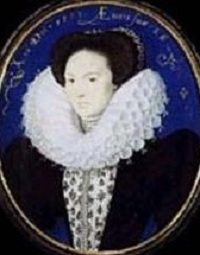 Aemilia Lanyer
Aemilia Lanyer
1569-1645
Emilia Lanyer, also spelled Lanier (baptized on January 27, 1569-1645), was the first Englishwoman to assert herself as a professional poet through her single volume of poems, Salve Deus Rex Judaeorum (1611). Born Aemilia Bassano and part of the Lanyer family tree, she was a member of the minor gentry through her father’s appointment as a royal musician and was apparently educated in the household by Susan Bertie, Countess of Kent. She was for several years the mistress of Henry Carey, 1st Baron Hunsdon, first cousin of Elizabeth I of England. She was married to her first cousin, court musician Alfonso Lanyer, in 1592, when she became pregnant by Hunsdon. The marriage was reportedly unhappy.
Church records show that Lanyer was baptized Aemilia Bassano at the parish church of St. Botolph, Bishopsgate, on January 27, 1569. Her father, Baptiste Bassano, was a Venice-born musician at the court of Elizabeth I. Her mother was Margret Johnson (born ca. 1545-1550).
In 1611, Lanyer published her volume of poetry, Salve Deus Rex Judaeorum. Lanyer was 42 years old at the time and the first woman in England to declare herself a poet. People who read her poetry considered it very radical and many scholars today refer to its style and arguments as “proto-feminist.” After the death of her husband, Lanyer supported herself by running a school. She rented a house from Edward Smith to house her students but, due to disputes over the correct rent price, was arrested on two different occasions between 1617 and 1619. Because parents weren’t willing to send their children to a woman with a history of arrest, Lanyer’s dreams of making the school prosperous ended.
Little else is known about Lanyer’s life between 1619 and 1635. Court documents state that, in 1635, Lanyer brought a lawsuit against her husband’s brother, Clement, for money owed to her from the profits of one of her late husband’s financial patents. The court ruled in Lanyer’s favor, declaring that Clement pay her £20. Clement couldn’t pay her immediately, so Lanyer brought the suit to court again in 1636 and in 1638. There are no records that verify whether Lanyer was ever paid in full, but it is known that, at the time of death, she was described as a “pensioner,” someone who had a steady income or pension.
Lanyer died at the age of 76 and was buried at Clerkenwell on April 3, 1645.
Source: http://en.wikipedia.org/wiki/Emilia_Lanier
 Bibliography
Bibliography
Press your browser’s BACK button to return to the previous page.
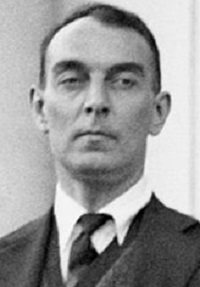 Ring Lardner
Ring Lardner
1885-1933
Ringgold Wilmer Lardner (March 6, 1885-September 25, 1933) was an American sports columnist and short story writer best known for his satirical takes on the sports world, marriage and the theatre.
Born in Niles, Michigan, Lardner was the son of wealthy parents, Henry and Lena Phillips Lardner. He was the youngest of nine children. Lardner’s name came from a cousin with exactly the same name. The cousin, in turn, had been named by Lardner’s uncle, Rear Admiral James L. Lardner, who had decided to name his son after a friend, Rear Admiral Cadwalader Ringgold, who was from a distinguished military family. Lardner never liked his given name and shortened it. He was married to Ellis Abbott of Goshen, Indiana, in 1911.
In 1913, Lardner provided lyrics for “That Old Quartet” for composer Nathaniel D. Mann. In 1916, Lardner published his first successful book, You Know Me Al, an epistolary novel written in the form of letters by “Jack Keefe,” a bush-league baseball player, to a friend back home. Lardner went on to write such well-known stories as “Haircut,” “Some Like Them Cold,” “The Golden Honeymoon,” “Alibi Ike” and “A Day with Conrad Green.” He also continued to write followup stories to You Know Me Al, with the hero of that book, the headstrong but gullible Jack Keefe, experiencing various ups and downs in his major league career and in his personal life. Private Keefe’s World War I letters home to his friend Al were collected in Treat ’Em Rough.
Lardner also had a lifelong fascination with the theatre, although his only success was June Moon, a comedy co-written with Broadway veteran George S. Kaufman. He did write a series of brief nonsense plays that poked fun at the conventions of the theatre, using zany, offbeat humor and outrageous, impossible stage directions, such as “The curtain is lowered for seven days to denote the lapse of a week.”
Lardner was also a well-known sports columnist, who began his career as a teenager with The South Bend Tribune. Soon after, he took a position with the rival South Bend Times, the first of many professional switches. In 1907, Lardner moved to Chicago, where he joined The Inter-Ocean, considered the worst newspaper in the city. Within the space of a year, he moved up to The Chicago Examiner, then to The Tribune. Two years later, Lardner was in St. Louis, writing the humorous baseball column, Pullman Pastimes, for Taylor Spink and The Sporting News; some of this work was the genesis for You Know Me, Al. Within three months, he was an employee of The Boston American.
Lardner returned to The Chicago Tribune in 1913, which became the home paper for his syndicated In the Wake of the News column (started by Hugh Keough, who died in 1912); it appeared in more than 100 newspapers and still runs in The Tribune. Lardner’s last baseball writing was Lose with a Smile in 1933.
He died September 25, 1933, at age 48, in East Hampton, New York, of complications from tuberculosis.
Source: http://en.wikipedia.org/wiki/Ring_Lardner
 Bibliography
Bibliography
Press your browser’s BACK button to return to the previous page.
 Philip Arthur Larkin
Philip Arthur Larkin
1922-1985
Philip Arthur Larkin (August 9, 1922-December 2, 1985) is widely regarded as one of the great English poets of the latter half of the 20th century. His first book of poetry, The North Ship, was published in 1945, followed by two novels, Jill (1946) and A Girl in Winter (1947), but he came to prominence in 1955 with the publication of his second collection of poems, The Less Deceived, followed by The Whitsun Weddings (1964) and High Windows (1974).
He contributed to The Daily Telegraph as its jazz critic from 1961 to 1971, articles gathered together in All What Jazz: A Record Diary 1961-71 (1985), and he edited The Oxford Book of Twentieth Century English Verse (1973). He was the recipient of many honors, including the Queen’s Gold Medal for Poetry. He was offered, but declined, the position of poet laureate in 1984, following the death of John Betjeman.
After graduating from Oxford in 1943 with a first in English language and literature, Larkin became a librarian. It was during the 30 years he served as university librarian at the Brynmor Jones Library at the University of Hull that he produced the greater part of his published work.
He died of esophageal cancer on December 2, 1985, at the age of 63.
Source: http://en.wikipedia.org/wiki/Philip_Larkin
 Bibliography
Bibliography
Press your browser’s BACK button to return to the previous page.
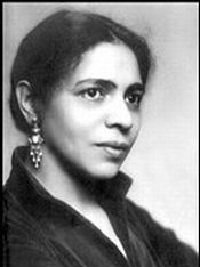 Nella Larsen
Nella Larsen
1891-1964
Nellallitea “Nella” Larsen (April 13, 1891-March 30, 1964) was an American novelist of the Harlem Renaissance. She published two novels and a few short stories. Though her literary output was scant, she nevertheless earned recognition by her contemporaries and by present-day critics.
Larsen went by various names throughout her life. She was born in Chicago, Illinois, as Nellie Walker. She was the daughter of Marie Hanson, a Danish immigrant, and Peter Walker, a West Indian man of predominantly African descent from Saint Croix, who soon disappeared from her life. Her mother was a domestic case worker in social services.
After her mother married Peter Larsen, a Scandinavian, Nellie took his surname, also sometimes using Nellye Larson, Nellie Larsen and, finally, Nella Larsen. After Larsen married, she sometimes used her married name Nella Larsen Imes.
As a child, Larsen lived several years with her mother’s relations in Denmark. In 1907-08, she briefly attended Fisk University, in Nashville, Tennessee, a historically black university; she then spent four years in Denmark, before returning to the U.S. In 1914, Larsen enrolled in the all-black nursing school at New York City’s Lincoln Hospital.
Upon graduating in 1915, Larsen went South to work at the Tuskegee Institute in Tuskegee, Alabama, where she became head nurse at its hospital and training school. While in Tuskegee, she came in contact with Booker T. Washington’s model of education and became disillusioned with it. Working conditions for nurses at Tuskegee were poor. Larsen lasted only until 1916, when she returned to New York to work again as a nurse.
In 1919, Larsen married Elmer Imes, a prominent physicist who was the second African-American to receive a Ph.D in physics. A year after her marriage, she published her first pieces. After working as a nurse through the Spanish flu pandemic of 1918, Larsen left nursing and became a librarian.
Larsen and her family moved to Harlem, where she was in charge of the children’s section of the Countee Cullen Branch of the New York Public Library (NYPL) after passing her certification exam in 1923. Later, in October 1925, she took a sabbatical from her job for health reasons and began to write her first novel. In 1926, having made friends with important figures in the Negro Awakening that became the Harlem Renaissance, Larsen gave up her work as a librarian.
She began to work as an active writer in the literary community. In 1928, Larsen published Quicksand, a largely autobiographical novel, which received significant critical acclaim if not great financial success. In 1929, she published Passing, her second novel, which was also critically successful. Her books dealt with issues related to experiences of mixed-race women.
In 1930, Larsen published “Sanctuary,” a short story for which she was accused of plagiarism. No charges were proved and Larsen received a Guggenheim Fellowship. She used it to travel to Europe for several years, spending time in Mallorca and Paris, where she worked on a novel about a love triangle. The three protagonists were all white; the book was never published.
Larsen returned to New York in 1933 after her divorce was complete. She lived on alimony until her ex-husband’s death in 1942. After that time, she returned to nursing and disappeared from literary circles.
Larsen died in her Brooklyn apartment in 1964, at the age of 72.
Source: http://en.wikipedia.org/wiki/Nella_Larsen
 Bibliography
Bibliography
Press your browser’s BACK button to return to the previous page.
 Erik Larson
Erik Larson
1954-
Erik Larson (born January 3, 1954) is an American author. He has written: Isaac’s Storm (1999), about the experiences of Isaac Cline during the Galveston Hurricane of 1900; The Devil in the White City: Murder, Magic and Madness at the Fair that Changed America (2003), about the 1893 Columbian Exposition in Chicago and a series of murders by H.H. Holmes that were committed in the city around the time of the Fair; and Thunderstruck, which intersperses the story of Hawley Harvey Crippen with the story of Guglielmo Marconi and the invention of radio. His most recent book, In The Garden of Beasts: Love, Terror and an American Family in Hitler’s Berlin, concerns William E. Dodd, the first American ambassador to Nazi Germany. The Devil in the White City won the 2004 Edgar Award in the Best Fact Crime category.
He is a former features writer for The Wall Street Journal and Time magazine, where he is still a contributing writer. His magazine stories have appeared in The New Yorker, The Atlantic Monthly, Harper’s and other publications. He is the author of two previous books, Lethal Passage: The Story of a Gun (1994) and The Naked Consumer: How Our Private Lives Become Public Commodities (1992).
Larson grew up in Freeport, Long Island. In the years since his departure from Long Island, he has lived in Bristol, Pennsylvania, Philadelphia, San Francisco, Baltimore and, finally, Seattle.
He studied Russian history at the University of Pennsylvania and graduated summa cum laude in 1976. After a year off, he attended the Columbia University Graduate School of Journalism, graduating in 1978. His first newspaper job was with The Bucks County Courier Times in Levittown, Pennsylvania, where he wrote about murder, witches, environmental poisons and other “equally pleasant” things.
Larson has taught nonfiction writing at San Francisco State University, the Johns Hopkins Writing Seminars and the University of Oregon. He has spoken to audiences from coast to coast and lives in Seattle.
Source: http://en.wikipedia.org/wiki/Erik_Larson_%28author%29
 Bibliography
Bibliography
Press your browser’s BACK button to return to the previous page.
 Francis Lathom
Francis Lathom
1774-1832
Francis Lathom (July 14, 1774-May 19, 1832) was a British Gothic novelist and playwright. He was born either in Rotterdam, Holland, where his father, Henry, conducted business for the East India Company (returning to England around 1777, settling near Norwich), or he was born in Norwich and may have been the illegitimate son of an English peer. In 1791, he joined the Norwich Stock Company, a stock theatre company, and began his literary career there.
Lathom was a precocious writer, beginning to write plays before he had turned 18. His first play, All in a Bustle, was produced on the Norwich stage at the Theatre Royal Norwich in 1795; he would go on to write six other plays, including The Dash of the Day (1800).
Lathom’s first novel, The Castle of Ollada (1795), was published anonymously. His next novel, The Midnight Bell (1798), is his most famous. Lathom would go on to publish many more Gothic novels, all with sensational titles such as Astonishment!!!, The Fatal Vow, The Unknown and The Impenetrable Secret, Find It Out!
But Lathom was not only a Gothic novelist: About half of his works are works of contemporary satire or attempts at fiction in the mode of Walter Scott. Montague Summers called Lathom’s Men and Manners (1799) his masterpiece and worthy of Dickens. Very Strange, but Very True! (1803), despite its enticing title, is not a Gothic novel but a rollicking farce.
Lathom can be cited for two important achievements as a novelist. First, he was one of the first writers of historical fiction, with historical romances such as The Mysterious Freebooter; or, The Days of Queen Bess (1806). Second, Lathom may be considered among the first gay writers. His Gothic novels often deal, albeit in a muted fashion, with subversive sexuality; his later works, including the novella, The One-Pound Note (1820), and the novel, Live and Learn, deal in a more surprisingly obvious way with the subject of mutual love between two men.
Lathom appears to have traveled extensively, visiting New York and Philadelphia and attempting to publish two novels in 1820. He also traveled in France and Italy, eventually settling in rural Scotland with the Rennie family, where he died in Aberdeenshire in 1832.
Source: http://en.wikipedia.org/wiki/Francis_Lathom
 Bibliography
Bibliography
Press your browser’s BACK button to return to the previous page.
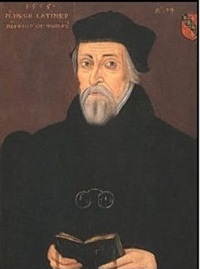 Hugh Latimer
Hugh Latimer
1490-1555
Hugh Latimer (c. 1487?-October 16, 1555) was a Fellow of Clare College, Cambridge, Bishop of Worcester before the Reformation and later Church of England chaplain to King Edward VI. In 1555, under Queen Mary, he was burned at the stake, becoming one of the three Oxford Martyrs of Anglicanism.
Latimer was born into a family of farmers in Thurcaston, Leicestershire. His birthdate is unknown. He started his studies in Latin grammar at the age of four but not much else is known of his childhood. He attended Cambridge University and was elected a fellow of Clare College on February 2, 1510. He received the Master of Arts degree in April 1514 and was ordained a priest on July 15, 1515. In 1522, Latimer was nominated to the positions of university preacher and university chaplain. While carrying out his official duties, he continued with theological studies and received the Bachelor of Divinity degree in 1524.
He began to preach publicly on the need for the translation of the Bible into English. This was a dangerous move, as the first translation of the New Testament by William Tyndale had recently been banned.
In 1535, he was appointed Bishop of Worcester, in succession to an Italian absentee, and promoted reformed teachings and iconoclasm in his diocese. In 1539, he opposed Henry VIII’s Six Articles, with the result that he was forced to resign his bishopric and was imprisoned in the Tower of London (where he was again in 1546).
During the reign of Henry’s son, Edward VI, Latimer was restored to favor as the English church moved in a more Protestant direction, becoming court preacher until 1550. However, when Edward VI’s sister, Mary I, came to the throne, he was tried for his beliefs and teachings in Oxford and imprisoned. In October 1555, he was burned at the stake outside Balliol College, Oxford.
Source: http://en.wikipedia.org/wiki/Hugh_Latimer
 Bibliography
Bibliography
Press your browser’s BACK button to return to the previous page.
 Margaret Laurence
Margaret Laurence
1926-1987
Jean Margaret Laurence (nee Wemyss) (July 18, 1926-January 5, 1987) was a Canadian novelist and short story writer, one of the major figures in Canadian literature.
Born in Neepawa, Manitoba, Laurence was the daughter of solicitor Robert Wemyss and Verna Jean Simpson. In 1944, Laurence attended Winnipeg’s United College (now the University of Winnipeg) on scholarship, pursuing an honors English degree. She wrote for the student newspaper and became involved with the “Old Left” socialist reform group. She graduated in 1947. Soon afterward, she was hired as a reporter for The Winnipeg Citizen, where she wrote book reviews, covered labor issues and hosted a daily radio column.
Following her graduation from United College, she married Jack Fergus Laurence, an engineer. His job took them to England (1949), the then-British protectorate of British Somaliland (1950-1952) and then to the British colony of the Gold Coast (1952-1957). Laurence developed an admiration for Africa and of its various populations, which found expression in her writing.
In 1962, she separated from her husband and moved to London, England, for a year. She then moved to Elm Cottage in Penn, Buckinghamshire, where she lived for more than 10 years, although she visited Canada often. Her divorce became final in 1969. That year, she became writer-in-residence at the University of Toronto. A few years later, she moved to Lakefield, Ontario. She wrote The Diviners (1974) during the summers of 1971 to 1973. Laurence served as Chancellor of Trent University in Peterborough from 1981 to 1983.
Following a diagnosis of advanced lung cancer, she committed suicide at her home at 8 Regent St., Lakefield, on January 5, 1987.
Source: http://en.wikipedia.org/wiki/Margaret_Laurence
 Bibliography
Bibliography
Press your browser’s BACK button to return to the previous page.
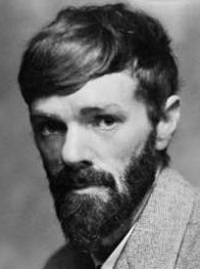 D.H. Lawrence
D.H. Lawrence
1885-1930
David Herbert Lawrence was born in 1885 in Eastwood, Nottinghamshire, the fourth child of Arthur Lawrence and Lydia Beardsall.
After attending Beauvale Board School, he won a scholarship to Nottingham High School. On leaving school in 1901, he was employed for a short time as a clerk at the Nottingham firm of Haywards, manufacturers of surgical appliances and, from 1902, as a pupil-teacher at the British School in Eastwood.
He attended the Pupil-Teacher Centre in Ilkeston from 1904 and, in 1906, received a teacher-training scholarship at University College, Nottingham. After qualifying in 1908, he accepted a teaching post at the Davidson School in Croydon, remaining there until 1912.
In early 1912, after a period of serious illness, Lawrence left his teaching post at Croydon to return to Nottinghamshire, shortly afterward eloping to Germany with Frieda Weekley, the wife of Professor Ernest Weekley. They returned to England in 1914 prior to the outbreak of World War I and were married at Kensington Register Office on July 14. Confined to England during the war years, the Lawrences spent much of this time at Tregerthen in Cornwall.
Lawrence was a prolific writer of poetry, novels, short stories, plays, essays and criticism. His works are heavily autobiographical and the experiences of his early years in Nottinghamshire continued to exert a profound influence throughout his life.
In 1919, they left England once more, embarking on a period of extensive traveling within Europe and then further afield to Ceylon, Australia, Mexico and New Mexico.
His health continued to deteriorate and Lawrence returned to Europe with Frieda in 1925. During his last years, Lawrence spent much of his time in Italy, making only brief visits to England, the last in 1926. He died on March 2, 1930 at Vence in the south of France.
 Bibliography
Bibliography
Press your browser’s BACK button to return to the previous page.
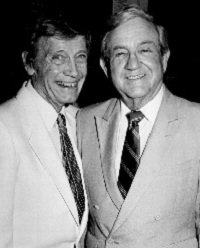 Jerome Lawrence and Robert Lee
Jerome Lawrence and Robert Lee
1915-2004/1918-1994
Jerome Lawrence was born and raised in Cleveland, Ohio; his parents, Samuel and Sarah, were (respectively) a printer and a poet. Lawrence left Cleveland for Columbus in the early 1930s, where he studied at the Ohio State University and earned a bachelor’s degree in 1937. In the year after graduation, Lawrence held two newspaper jobs in small Ohio towns before heading off to Beverly Hills, where he worked until 1939 as a radio station continuity editor. He began graduate studies at UCLA, when his radio job ended, but took a position as a senior staff writer at CBS at the same time; the job eventually eclipsed his education. Lawrence stayed with CBS, working in both New York and Los Angeles, until 1942, when he served in the Army during World War II. While enlisted, Lawrence served as a correspondent, was promoted to staff sergeant and earned a battle star from the secretary of war. He also helped found the Armed Forces Radio Service with friend and business partner, Robert E. Lee.
Lee was born not far from Jerome Lawrence, in a distant suburb of Cleveland called Elyria. His mother, Elvira, was a teacher, and his father, Claire, was an engineer. In 1934, Lee left home for Northwestern University in Chicago, where he studied for one year. In 1935, he resumed studies closer to home, at Ohio Wesleyan University in Delaware, and also took a job as a technician at a local observatory; but, after just two years, Lee left both behind. He took a directing job at a Cleveland radio station but was drawn once again to higher education and spent a year at Cleveland’s Western Reserve University.
Though their first play, Laugh, God! was published in 1939, Lee and Lawrence did not form an official partnership until 1942, at the beginning of their tours of duty. By the time both men were released from the Army in 1945, they had already published their second collaboration – Inside a Kid’s Head. The pair wrote and produced two more plays over the next decade, but their careers as playwrights really took off in 1955 with Inherit the Wind, the story of one of the first teachers who dared to teach Darwin’s theory of evolution. The play was wildly successful and, the same year as its release, the pair formed Lawrence and Lee, Inc.
From there, Lawrence and Lee went on to write more than 30 different plays, one-act operas and musicals. Two of their works included the popular Auntie Mame, about the adventures of a fascinating woman who lived life to its fullest, and The Night Thoreau Spent in Jail, about “Thoreau’s imprisonment for tax evasion based on moral reasons.”
Source: http://www.orrt.org/lawrence/
 Bibliography
Bibliography
Press your browser’s BACK button to return to the previous page.
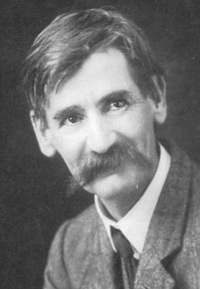 Henry Lawson
Henry Lawson
1867-1922
Henry Lawson (June 17, 1867-September 2, 1922) was an Australian writer and poet. Along with his contemporary, Banjo Paterson, Lawson is among the best-known Australian poets and fiction writers of the colonial period and is often called Australia’s “greatest writer.”
Lawson was born in a town on the Grenfell goldfields of New South Wales. His father was Niels Herzberg Lawson, a Norwegian-born miner who went to sea at 21 and arrived in Melbourne in 1855 to join the gold rush, along with partner William Henry John Slee. Lawson’s parents met at the goldfields of Pipecla and married on July 7, 1866. On Henry’s birth, the family surname was Anglicized and Niels became Peter Lawson.
Lawson attended school at Eurunderee from October 2, 1876, but suffered an ear infection at around this time. It left him with partial deafness and by the age of 14 he had lost his hearing entirely. Reading became a major source of his education because, due to his deafness, he had trouble learning in the classroom.
Lawson’s first published poem was “A Song of the English,” which appeared in The Bulletin on October 1, 1887. This was followed by “The Wreck of the Derry Castle” and then “Golden Gully.”
In 1890-1891, Lawson worked in Albany. He returned to Sydney and continued to write for The Bulletin which, in 1892, paid for an inland trip where he experienced the harsh realities of drought-affected New South Wales. This resulted in his contributions to The Bulletin Debate and became a source for many of his stories in subsequent years.
Lawson’s most successful prose collection is While the Billy Boils, published in 1896. “The Drover’s Wife” is regarded as one of his finest short stories.
In 1903, he bought a room at Mrs. Issabella Byers’ Coffee Palace in North Sydney. Despite his position as the most-celebrated Australian writer of the time, Lawson was deeply depressed and perpetually poor. Lawson became withdrawn, alcoholic and unable to carry on the usual routine of life.
It was in Mrs. Isabella Byers’ home that Henry Lawson died, of cerebral hemorrhage, in Abbotsford, Sydney in 1922.
Source: http://en.wikipedia.org/wiki/Henry_Lawson
 Bibliography
Bibliography
Press your browser’s BACK button to return to the previous page.
 Emma Lazarus
Emma Lazarus
1849-1887
Emma Lazarus (July 22, 1849-November 19, 1887) was an American Jewish poet born in New York City. She is best known for “The New Colossus,” a sonnet written in 1883; its lines appear on a bronze plaque in the pedestal of the Statue of Liberty in 1912. The sonnet was solicited by William Maxwell Evarts as a donation to an auction, conducted by the Art Loan Fund Exhibition in Aid of the Bartholdi Pedestal Fund for the Statue of Liberty, to raise funds to build the pedestal.
She was honored by the Office of the Manhattan Borough President in March 2008 and was included in a map of historical sites related or dedicated to important women.
Lazarus was the fourth of seven children of Moshe Lazarus and Esther Nathan, Portuguese Sephardic Jews whose families had been settled in New York since the colonial period. She was related through her mother to Benjamin N. Cardozo, Associate Justice of the U.S. Supreme Court.
From an early age, she studied American and British literature, as well as several languages, including German, French and Italian. Her writings attracted the attention of Ralph Waldo Emerson. He corresponded with her until his death.
Lazarus wrote her own poems and edited many adaptations of German poems, notably those of Johann Wolfgang von Goethe and Heinrich Heine. She also wrote a novel and two plays. Her most famous work is “The New Colossus,” which is inscribed on the pedestal of the Statue of Liberty.
Lazarus began to be more interested in her Jewish ancestry after reading the George Eliot novel, Daniel Deronda, and as she heard of the Russian pogroms in the early 1880s. This led Lazarus to write articles on the subject. She also began translating the works of Jewish poets into English. In the winter of 1882, multitudes of destitute Ashkenazi Jews emigrated from the Russian Pale of Settlement to New York; Lazarus taught technical education to help them become self-supporting.
She traveled twice to Europe, first in May 1885, after the death of her father in March, and again in September 1887. She returned to New York City seriously ill after her second trip and died two months later on November 19, 1887, most likely from Hodgkin’s lymphoma.
Source: http://en.wikipedia.org/wiki/Emma_Lazarus
 Bibliography
Bibliography
Press your browser’s BACK button to return to the previous page.
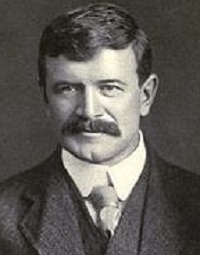 Stephen Leacock
Stephen Leacock
1869-1944
Stephen Butler Leacock (December 30, 1869-March 28, 1944) was an English-born Canadian teacher, political scientist, writer and humorist.
Leacock was born in Swanmore, near Bishop’s Waltham, Hampshire, England, and at the age of six moved to Canada with his family, which settled on a farm in Egypt, Ontario. Always of obvious intelligence, he was sent by his grandfather to the elite private school of Upper Canada College in Toronto. In 1887, 17-year-old Leacock started at University College at the University of Toronto.
He left university to work as a teacher – an occupation he disliked immensely – in Toronto. As a teacher at Upper Canada College, his alma mater, he was able simultaneously to attend classes at the University of Toronto and, in 1891, earn his degree through part-time studies. It was during this period that his first writing was published in The Varsity, a campus newspaper.
Early in his career, Leacock turned to fiction, humor and short reports to supplement (and ultimately exceed) his regular income. His stories, first published in magazines in Canada and the United States and later in novel form, became extremely popular around the world.
Leacock died of throat cancer on March 28, 1944.
Source: http://en.wikipedia.org/wiki/Stephen_Leacock
 Bibliography
Bibliography
Press your browser’s BACK button to return to the previous page.
 Mary Leapor
Mary Leapor
1722-1746
Mary Leapor (1722-1746) was an English poet, born in Marston St. Lawrence, Northamptonshire, the only child of Anne Sharman (died 1741) and Philip Leapor (1693-1771), a gardener. She is notable for being one of the most critically well-received of the numerous laboring-class writers of the period.
Partly self-educated, she probably received a rudimentary education at either a local Dame school or at the local free school in Brackley on the south side of the Chapel. According to her father, she began writing “tolerably” at the age of 10. Her father recollected, “She would often be scribbling, and sometimes in Rhyme,” but that her mother ended up discouraging the writing, requesting she find some “more profitable employment.”
She was fortunate enough to attain a position as kitchen maid with an employer, Susanna Jennens, who apparently encouraged her writing and allowed her the use of her library. Jennens wrote poetry herself and had connections to both Mary Astell and Mary Wortley Montagu. Not all employers were so accommodating and Leapor’s devotion to writing led to her dismissal from a subsequent position with Sir Richard Chauncy’s family, as she apparently would not stop writing even in the kitchen.
She returned home to Brackley to care for her widowed father in 1744 or 1745 and, despite many responsibilities and not the best of health, she continued to write. Her work circulated among the inhabitants of the town. As a consequence, she met Bridget Freemantle (1698-1779), the daughter of a former rector, who became both her friend and mentor. This relationship seems to have marked a turning point for Leapor and she wrote the bulk of her oeuvre in a very short period. It was Freemantle who suggested that Leapor publish a volume of poetry by subscription, and she also attempted to have a play of hers, a blank verse tragedy called The Unhappy Father, produced in London at the Covent Garden Theatre (a second play remains unfinished). Neither venture was immediately successful.
Leapor died of measles at the age of 24.
Source: http://en.wikipedia.org/wiki/Mary_Leapor
 Bibliography
Bibliography
Press your browser’s BACK button to return to the previous page.
 Edward Lear
Edward Lear
1812-1888
Edward Lear (May 12, 1812-January 29, 1888) was an English artist, illustrator, author and poet, renowned today primarily for his literary nonsense, in poetry and prose, and especially his limericks, a form that he popularized.
Lear was born into a middle-class family in the village of Holloway, the 21st child of Ann and Jeremiah Lear. He was raised by his eldest sister, also named Ann, 21 years his senior. Ann doted on Lear and continued to mother him until her death, when Lear was almost 50 years of age. Due to the family’s failing financial fortune, at age four he and his sister had to leave the family home and set up house together.
Largely self-educated, Lear has been described as idiosyncratic yet brilliantly talented. Lear also suffered from health issues. From the age of six he suffered frequent grand mal epileptic seizures, bronchitis, asthma and, in later life, partial blindness. Lear experienced his first seizure at a fair near Highgate with his father. The event scared and embarrassed him. Lear felt lifelong guilt and shame for his epileptic condition. His adult diaries indicate that he always sensed the onset of a seizure in time to remove himself from public view. How Lear was able to anticipate them is not known, but many people with epilepsy report a ringing in their ears or an “aura” before the onset of a seizure. In Lear’s time, epilepsy was believed to be associated with demonic possession, which contributed to his feelings of guilt and loneliness. When Lear was about seven, he began to show signs of depression, possibly due to the constant instability of his childhood. He suffered from periods of severe depression that he referred to as “the Morbids.”
Lear traveled widely throughout his life and eventually settled in Sanremo, on the Mediterranean coast, in the 1870s, at a villa he named “Villa Tennyson.” The closest he came to marriage was two proposals, both to the same woman 46 years his junior, which were not accepted.
After a long decline in his health, Lear died at his villa, in 1888, of the heart disease from which he had suffered since at least 1870.
Source: http://en.wikipedia.org/wiki/Edward_Lear
 Bibliography
Bibliography
Press your browser’s BACK button to return to the previous page.
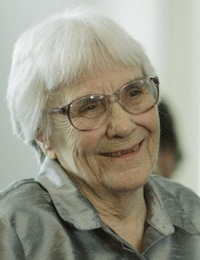 Harper Lee
Harper Lee
1926-2016
Nelle Harper Lee (born April 28, 1926) was an American author known for her 1960 Pulitzer Prize-winning novel, To Kill a Mockingbird, which deals with the issues of racism that were observed by the author as a child in her hometown of Monroeville, Alabama. Despite being what was then believed to be Lee’s only published book, it led to her being awarded the Presidential Medal of Freedom of the United States for her contribution to literature in 2007. Lee was also the recipient of numerous honorary degrees but always declined to make a speech.
Other significant contributions of Lee include assisting her close friend, Truman Capote, in his research for the book In Cold Blood.
Lee was born and raised in Monroeville, Alabama, the youngest of four children of Amasa Coleman Lee and Frances Cunningham Finch. Her father, a former newspaper editor and proprietor, was a lawyer who served in the Alabama State Legislature from 1926 to 1938. As a child, Lee was a tomboy and a precocious reader. She was best friends with her schoolmate and neighbor, the young Truman Capote.
While enrolled at Monroe County High School, Lee developed an interest in English literature. After graduating in 1944, she went to the all-female Huntingdon College in Montgomery. Lee stood apart from the other students – she could not have cared less about fashion, makeup or dating. Instead, she focused on her studies and on her writing. Lee was a member of the literary honor society and the glee club.
Transferring to the University of Alabama at Tuscaloosa, Lee was known for being a loner and an individualist. She did make a greater attempt at a social life there, joining a sorority for a while. Pursuing her interest in writing, Lee contributed to the school’s newspaper and its humor magazine, The Rammer Jammer. She eventually became the editor of The Rammer Jammer.
In her junior year, Lee was accepted into the university’s law school, which allowed students to work on law degrees while still undergraduates. The demands of her law studies forced her to leave her post as editor of The Rammer Jammer. After her first year in the law program, Lee began expressing to her family that writing – not the law – was her true calling. She went to Oxford University in England that summer as an exchange student. Returning to her law studies that fall, Lee dropped out after the first semester. She soon moved to New York City to follow her dreams to become a writer.
In 1949, 23-year-old Lee arrived in New York City. She struggled for several years, working as a ticket agent for Eastern Airlines and for the British Overseas Air Corp (BOAC). While in the city, Lee was reunited with Capote, one of the literary rising stars of the time. She also befriended Broadway composer and lyricist Michael Brown and his wife, Joy. Having written several long stories, Lee located an agent in November 1956. The following month at the Browns’ East 50th townhouse, she received a gift of a year’s wages from them with a note: “You have one year off from your job to write whatever you please. Merry Christmas.” She quit her job and devoted herself to her craft. Within a year, she had a first draft. Working with J.B. Lippincott & Co. editor Tay Hohoff, she completed To Kill a Mockingbird in the summer of 1959. Published July 11, 1960, To Kill a Mockingbird was an immediate bestseller and won great critical acclaim, including the Pulitzer Prize for Fiction in 1961.
In 2015, a copy of her first novel was discovered attached to an original manuscript of To Kill a Mockingbird. Titled Go Set a Watchman, the story portrays many of the characters of the original story 20 years later as they experience many issues of the Civil Rights movement in the 1950s.
Lee died in her sleep on the morning of February 19, 2016, aged 89, in Monroeville, Alabama.
Source: http://en.wikipedia.org/wiki/Harper_Lee
 Bibliography
Bibliography
Press your browser’s BACK button to return to the previous page.
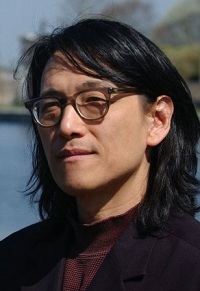 Li-Young Lee
Li-Young Lee
1957-
Li-Young Lee (born August 19, 1957) is an American poet. He was born in Jakarta, Indonesia, to Chinese parents. His maternal grandfather was Yuan Shikai, China’s first republican president, who attempted to make himself emperor. Lee’s father, who was a personal physician to Mao Zedong while in China, relocated his family to Indonesia, where he helped found Gamaliel University. His father was exiled and spent 19 months in an Indonesian prison camp in Macau. In 1959, the Lee family fled the country to escape anti-Chinese sentiment and, after a five-year trek through Hong Kong and Japan, they settled in the United States in 1964. Li-Young Lee attended the University of Pittsburgh, the University of Arizona and the State University of New York at Brockport.
At the University of Pittsburgh, Lee began to develop his love for writing. He had seen his father find his passion for ministry and, as a result of his father reading to him and encouraging Lee to find his passion, Lee began to dive into the art of language. Lee’s writing has also been influenced by classic Chinese poets, such as Li Bai and Du Fu. Many of Lee’s poems are filled with themes of simplicity, strength and silence.
Source: http://en.wikipedia.org/wiki/Li-Young_Lee
 Bibliography
Bibliography
Press your browser’s BACK button to return to the previous page.
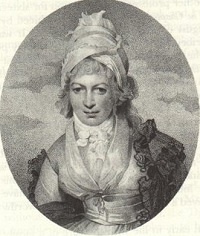 Sophia Lee
Sophia Lee
1750-1824
Sophia Lee (1750-March 13, 1824) was an English novelist and dramatist. She was the daughter of John Lee (died 1781), actor and theatrical manager, and was born in London. Her first piece, The Chapter of Accidents, a three-act opera based on Denis Diderot’s Le pere de famille, was produced by George Colman the Elder at the Haymarket Theatre on August 5, 1780, and was an immediate success.
When her father died in 1781, Lee spent the proceeds of the opera on establishing a school at Bath, where she made a home for her sisters, Anne and Harriet. Her novel, The Recess, or a Tale of Other Times (1783), was a historical romance; and the play, Almeyda, Queen of Grenada (1796), was a long tragedy in blank verse, which opened at Drury Lane on April 20, 1796, but ran for only four nights.
With her sister, Harriet, Lee wrote a series of Canterbury Tales (1797). Other works included The Life of a Lover (1804) and Ormond; or the Debauchee (1810). She died at her house near Clifton, Bristol, on March 13, 1824.
Source: http://en.wikipedia.org/wiki/Sophia_Lee
 Bibliography
Bibliography
Press your browser’s BACK button to return to the previous page.
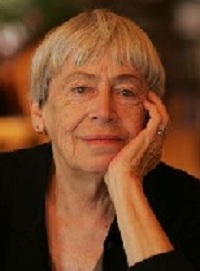 Ursula LeGuin
Ursula LeGuin
1929-2018
Ursula Kroeber LeGuin (October 21, 1929-January 22, 2018) was an American author. She wrote novels, poetry, children’s books, essays and short stories, notably in fantasy and science fiction. First published in the 1960s, her works explore Taoist, anarchist, ethnographic, feminist, queer theory, psychological and sociological themes.
Le Guin was born and raised in Berkeley, California, the daughter of anthropologist Alfred L. Kroeber and writer Theodora Kroeber. In 1901, Le Guin’s father earned the first Ph.D in anthropology in the United States from Columbia University and went on to found the second department, at the University of California, Berkeley.
Le Guin received her B.A. from Radcliffe College in 1951 and M.A. from Columbia University in 1952. She later studied in France, where she met her husband, the historian Charles Le Guin. They were married in 1953.
She became interested in literature when she was young. At the age of 11, she submitted her first story to the magazine, Astounding Science Fiction. It was rejected. Her earliest writings, some of which she adapted to include in Orsinian Tales and Malafrena, were non-fantastic stories of imaginary countries. Searching for a way to express her interests, she returned to her early interest in science fiction and in the early 1960s began to be published regularly. She received wide recognition for her novel, The Left Hand of Darkness, which won the Hugo and Nebula awards in 1970. Her subsequent novel, The Dispossessed, made her the first person to win both the Hugo and Nebula Awards for Best Novel twice for the same two books.
In later years, Le Guin did work in film and audio. She contributed to The Lathe of Heaven, a 1979 PBS film based on her novel of the same name. In 1985, she collaborated with avant-garde composer David Bedford on the libretto of Rigel 9, a space opera.
In May 1983, Le Guin delivered a well-received commencement address, entitled “A Left Handed Commencement Address,” at Mills College in Oakland, California. “A Left Handed Commencement Address” is included in her nonfiction collection, Dancing at the Edge of the World.
In December 2009, Le Guin resigned from the Authors Guild in protest over its endorsement of Google’s book digitization project. “You decided to deal with the devil,” she wrote in her resignation letter. “There are principles involved, above all the whole concept of copyright; and these you have seen fit to abandon to a corporation, on their terms, without a struggle.”
Le Guin died at the age of 88 on January 22, 2018, at her home in Portland, where she had lived since 1958.
Source: http://en.wikipedia.org/wiki/Ursula_K._Le_Guin
 Bibliography
Bibliography
Press your browser’s BACK button to return to the previous page.
 Gottfried Wilhelm Leibniz
Gottfried Wilhelm Leibniz
1646-1716
Gottfried Wilhelm Leibniz (July 1, 1646-November 14, 1716) was a German mathematician and philosopher.
Leibniz occupies a prominent place in the history of mathematics and the history of philosophy. He developed infinitesimal calculus independently of Isaac Newton, and Leibniz’s mathematical notation has been widely used ever since it was published.
He became one of the most prolific inventors in the field of mechanical calculators. While working on adding automatic multiplication and division to Pascal’s calculator, he was the first to describe a pinwheel calculator in 1685 and invented the Leibniz wheel, used in the arithmometer, the first mass-produced mechanical calculator. He also refined the binary number system, which is at the foundation of virtually all digital computers.
In philosophy, Leibniz is mostly noted for his optimism, e.g., his conclusion that our universe is, in a restricted sense, the best possible one that God could have created.
Leibniz, along with Rene Descartes and Baruch Spinoza, was one of the three great 17th century advocates of rationalism. The work of Leibniz anticipated modern logic and analytic philosophy, but his philosophy also looks back to the scholastic tradition, in which conclusions are produced by applying reason to first principles or prior definitions rather than to empirical evidence.
Leibniz made major contributions to physics and technology, and anticipated notions that surfaced much later in biology, medicine, geology, probability theory, psychology, linguistics and information science. He wrote works on politics, law, ethics, theology, history, philosophy and philology. Leibniz’s contributions to this vast array of subjects were scattered in various learned journals, in tens of thousands of letters and in unpublished manuscripts. As of 2011, there is no complete gathering of the writings of Leibniz.
Leibniz died in Hanover in 1716.
Source: http://en.wikipedia.org/wiki/Gottfried_Leibniz
 Bibliography
Bibliography
Press your browser’s BACK button to return to the previous page.
 Stanislaw Lem
Stanislaw Lem
1921-2006
Stanislaw Lem (September 12, 1921-March 27, 2006) was a Polish writer of science fiction, philosophy and satire. He is perhaps best known as the author of the 1961 novel, Solaris.
Lem was born in 1921 in Lwow, Poland (now Ukraine). Because of his “bourgeois origin,” and only due to his father’s connections, he was accepted to study medicine at Lwow University in 1940. During World War II and the Nazi occupation (1941-1944), Lem survived with false papers, earning a living as a car mechanic and welder and becoming active in the resistance.
Lem made his literary debut in 1946 as a poet, and at that time he also published several dime novels. Beginning that year, Lem’s first science fiction novel, Czlowiek z Marsa (The Man from Mars), was serialized in the magazine, Nowy Swiat Przygod (New World of Adventures). Between 1947 and 1950, Lem, while continuing his work as a scientific research assistant, published poems, short stories and scientific essays. However, during the era of Stalinism, all published works had to be directly approved by the communist regime. Lem finished a partly autobiographical novella, Hospital of the Transfiguration (Szpital Przemienienia), in 1948, but it was suppressed by the authorities until 1955, when he added a sequel more acceptable to the doctrine of socialist realism. In 1951, he published his first book, Astronauci (The Astronauts); it was commissioned as juvenile science fiction and Lem was forced to include many references to the “glorious future of communism.” He later criticized this novel as simplistic; nonetheless, its publication persuaded him to become a full-time writer.
Lem became truly productive after 1956, when the de-Stalinization period in the Soviet Union led to the “Polish October” and Poland experienced an increase in freedom of speech. Between 1956 and 1968, Lem authored 17 books. In 1957, he published his first nonfiction, philosophical book, Dialogi (Dialogues). Dialogi and Summa Technologiae (1964) are his two most famous philosophical texts. Over the next few decades, he published many books, both science fiction and philosophical/futurological, although from the 1980s onward he tended to concentrate on philosophical texts and essays.
He gained international fame for The Cyberiad, a series of humorous short stories from a mechanical universe inhabited by robots (who had occasional contacts with biological “slimies” and human “palefaces”), first published in English in 1974. His best-known novels include Solaris (1961), His Master’s Voice (Glos pana, 1968) and Fiasco (Fiasko, 1987), expressing most strongly his major theme of the futility of mankind’s attempts to comprehend the truly alien.
Lem died in Krakow due to heart disease on March 27, 2006, at the age of 84.
Source: http://en.wikipedia.org/wiki/Stanis%C5%82aw_Lem
 Bibliography
Bibliography
Press your browser’s BACK button to return to the previous page.
 Vladimir Lenin
Vladimir Lenin
1870-1924
Vladimir Lenin was a Russian revolutionary and communist who led the famous October Revolution in Russia. Lenin was a driving force in overthrowing the Czarist autocracy and was de facto first leader of the Soviet Union.
In 1902, Vladimir Lenin published a pamphlet, “What Is to Be Done?,” in which he argued for a party of professional revolutionaries dedicated to the overthrow of the autocracy of the Czars. Following the 1917 revolution, the Bolshevik faction of the Social Democratic Labor Party, headed by Lenin, emerged victorious and subsequently formed the government.
While in power, Lenin howled against the oppression of peasants and workers and emerged as the strongest force against capitalism in the world. He was criticized for establishing dictatorship of the Communist Party in Russia.
He died of a cerebral hemorrhage on January 21, 1924.
Source: http://www.thefamouspeople.com/profiles/vladimir-lenin-96.php
 Bibliography
Bibliography
Press your browser’s BACK button to return to the previous page.
 Anna Leonowens
Anna Leonowens
1831-1915
Anna Leonowens (November 26, 1831-January 19, 1915) was an Anglo-Indian travel writer, educator and social activist, known for working in Siam from 1862-1868, where she taught the wives and children of Mongkut, king of Siam. She is also known for co-founding the Nova Scotia College of Art and Design. Leonowens’ experiences in Siam were fictionalized in Margaret Landon’s 1944 bestselling novel, Anna and the King of Siam, and in various films and television miniseries based on the book, most notably Rodgers and Hammerstein’s 1951 hit musical, The King and I.
Leonowens was born Anna Harriette Edwards in Ahmadnagar, India on November 26, 1831. She was the second daughter of Sergeant Thomas Edwards of the Sappers and Miners, a former London cabinetmaker, and his Anglo-Indian wife, Mary Anne Glasscott, daughter of a lieutenant in the Bombay Army.
At the end of 1849, Anna she married her childhood sweetheart, Thomas Leon Owens or Leonowens, a civilian clerk. In 1852, the young couple, accompanied by Anna’s uncle, W.V. Glasscott, sailed to Australia via Singapore, where they boarded the barque Alibi. The journey from Singapore was long and Anna gave birth to a son, Thomas, on board. On March 8, 1853, nearing the Western Australian coast, the Alibi was almost wrecked on a reef. Ten days later Anna, her newborn son and Glasscott arrived in Perth, where Thomas quickly found employment as a clerk in the colonial administration. Later moving to Penang, Singapore, Thomas found work as a hotel keeper, only to die of apoplexy, leaving Anna Leonowens an impoverished widow.
To support her daughter, Avis, and son, Louis, Leonowens again took up teaching and opened a school for the children of British officers in Singapore. While the enterprise was not a financial success, it established her reputation as an educator.
In 1862, Leonowens accepted an offer made by the Siamese consul in Singapore, Tan Kim Ching, to teach the wives and children of Mongkut, King of Siam. The king wished to give his 39 wives and concubines and 82 children a modern Western education on scientific secular lines, which earlier missionaries’ wives had not provided. Leonowens served at court until 1867, a period of nearly six years, first as a teacher and later as language secretary for the king.
By 1869, Leonowens was in New York and began contributing travel articles to a Boston journal, Atlantic Monthly, including “The Favorite of the Harem.” She expanded her articles into two volumes of memoirs, beginning with The English Governess at the Siamese Court (1870), which earned her immediate fame but also brought charges of sensationalism. The sequel, Romance of the Harem (1873), incorporates tales based on palace gossip.
Anna Leonowens died on January 19, 1915, at 83 years of age.
Source: http://en.wikipedia.org/wiki/Anna_Leonowens
 Bibliography
Bibliography
Press your browser’s BACK button to return to the previous page.
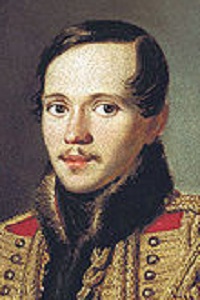 Mikhail Yurevich Lermontov
Mikhail Yurevich Lermontov
1814-1841
Mikhail Yuryevich Lermontov (October 15, 1814-July 27, 1841), a Russian Romantic writer, poet and painter, sometimes called “the poet of the Caucasus,” became the most important Russian poet after Alexander Pushkin’s death in 1837.
Lermontov was born in Moscow into a respectable noble family of the Tula Oblast and grew up on the Tarkhany estate in the village of Tarkhany (now Lermontovo) in Penza Oblast. In August 1830, Lermontov entered Moscow University. His career at the university was short-lived. He attended lectures faithfully but he would often read a book in the corner of the auditorium and rarely took part in student life.
The events at the university led Lermontov to seriously reconsider his career choice. From 1830 to 1834, he attended the cadet school in Saint Petersburg and, in due course, he became an officer in the guards. At that time he began writing poetry. He also took a keen interest in Russian history and medieval epics, which would be reflected in “The Song of the Merchant Kalashnikov” and his long poem “Borodino,” poems addressed to the city of Moscow and a series of popular ballads.
To express his own and the nation’s anger at the death of Pushkin, the young soldier wrote a passionate poem, “Death of the Poet,” which all but accuses the powerful “pillars” of Russian high society of complicity in Pushkin’s death. Tsar Nicholas I took offense and Lermontov was banished to the Caucasus as an officer in the dragoons.
Lermontov visited Saint Petersburg in 1838 and 1839 and his indignant observations of the aristocratic milieu, where fashionable ladies welcomed him as a celebrity, occasioned his play, Masquerade. Lermontov’s duel with a son of the French ambassador led to him being returned to the army fighting the war in the Caucasus, where he distinguished himself in hand-to-hand combat at the Battle of the Valerik River, the basis for his poem “Valerik.” By 1839, he completed his most important novel, A Hero of Our Time.
On July 25, 1841, at Pyatigorsk, fellow army officer Nikolai Martynov, who felt offended by one of Lermontov’s jokes, challenged him to a duel. The duel took place two days later at the foot of Mashuk mountain. Lermontov was killed by Martynov’s first shot.
Source: http://en.wikipedia.org/wiki/Mikhail_Lermontov
 Bibliography
Bibliography
Press your browser’s BACK button to return to the previous page.
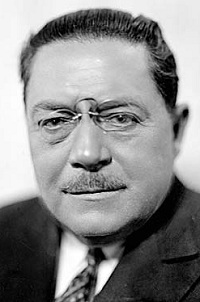 Gaston Leroux
Gaston Leroux
1868-1927
Gaston Louis Alfred Leroux (May 6, 1868-April 15, 1927) was a French journalist and author of detective fiction. In the English-speaking world, he is best known for writing the novel, The Phantom of the Opera (Le Fantome de l’Opera, 1910).
Leroux was born in Paris in 1868. He went to school in Normandy and studied law in Paris, graduating in 1889. He inherited millions of francs and lived wildly until he nearly reached bankruptcy. Subsequently, in 1890, he began working as a court reporter and theater critic for L’Echo de Paris. His most important journalism came when he began working as an international correspondent for the Paris newspaper, Le Matin. In 1905, he was present at, and covered, the Russian Revolution. Another case he witnessed involved the investigation and in-depth coverage of the former Paris Opera.
He suddenly left journalism in 1907 and began writing fiction. In 1909, he and Arthur Bernede formed their own film company, Societe des Cineromans, to publish novels and simultaneously turn them into films. He first wrote a mystery novel, entitled Le mystere de la chambre jaune (1908, The Mystery of the Yellow Room), starring the amateur detective, Joseph Rouletabille. Leroux’s contribution to French detective fiction is considered a parallel to Sir Arthur Conan Doyle’s in the United Kingdom and Edgar Allan Poe’s in the United States.
Leroux died in Nice, France, on April 15, 1927, of a urinary tract infection.
Source: http://en.wikipedia.org/wiki/Gaston_Leroux
 Bibliography
Bibliography
Press your browser’s BACK button to return to the previous page.
 Doris Lessing
Doris Lessing
1919-2013
Doris May Lessing (nee Tayler; born October 22, 1919) is a British writer. Her novels include The Grass Is Singing, The Golden Notebook and five novels collectively known as Canopus in Argos.
Lessing was born in Iran, then known as Persia, to Captain Alfred Tayler and Emily Maude Tayler (nee McVeagh), who were both English and of British nationality. Alfred Tayler and his wife moved to Kermanshah, Iran, in order to take a job as a clerk for the Imperial Bank of Persia. The family moved to the British colony of Southern Rhodesia (now Zimbabwe) in 1925.
Lessing was educated at the Dominican Convent High School, a Roman Catholic convent all-girls school in Salisbury (now Harare). She left school aged 14 and thereafter was self-educated; she left home at 15 and worked as a nursemaid. She started reading material on politics and sociology that her employer gave her and began writing around this time.
Lessing was awarded the 2007 Nobel Prize in Literature. She was described by the Swedish Academy as “that epicist of the female experience, who with skepticism, fire and visionary power has subjected a divided civilisation to scrutiny.” Lessing was the 11th woman and the oldest person ever to receive the Nobel Prize in Literature. In 2001, she was awarded the David Cohen Prize for a lifetime’s achievement in British Literature.
Lessing died on November 18, 2013, at the age of 94.
Source: http://en.wikipedia.org/wiki/Doris_Lessing
 Bibliography
Bibliography
Press your browser’s BACK button to return to the previous page.
 John Lethem
John Lethem
1964-
Jonathan Allen Lethem (born February 19, 1964) is an American writer. Born in Brooklyn, New York, Lethem trained to be an artist before moving to California and devoting his time to writing. His first novel, Gun, with Occasional Music, a genre work that mixed elements of science fiction and detective fiction, was published in 1994. It was followed by three more science fiction novels. In 1999, Lethem published Motherless Brooklyn, a National Book Critics Circle Award-winning novel that achieved mainstream success.
In 2003, he published The Fortress of Solitude, which became a New York Times bestseller. Lethem is also a prolific essayist and short story writer.
Source: http://en.wikipedia.org/wiki/Jonathan_Lethem
 Bibliography
Bibliography
Press your browser’s BACK button to return to the previous page.
 Denise Levertov
Denise Levertov
1923-1997
Denise Levertov (October 24, 1923-December 20, 1997) was a British-born American poet. Levertov was born and grew up in Ilford, Essex. Her mother, Beatrice Spooner-Jones Levertoff, came from a small mining village in North Wales. Her father, Paul Levertoff, had been a teacher at Leipzig University and, as a Russian Hassidic Jew, was held under house arrest during World War I as an “enemy alien” by virtue of his ethnicity. He emigrated to the UK and became an Anglican priest.
When she was five years old, Levertov declared she would be a writer. At the age of 12, she sent some of her poems to T.S. Eliot, who replied with a two-page letter of encouragement. In 1940, when she was 17, Levertov published her first poem. During the Blitz, Levertov served in London as a civilian nurse. Her first book, The Double Image, was published six years later. In 1947, she married American writer Mitchell Goodman and moved with him to the United States the following year. In 1955, she became a naturalized American citizen. Her first American book of poetry was Here and Now. Her poem, “With Eyes at the Back of Our Heads,” established her reputation.
During the 1960s and 70s, Levertov became much more politically active in her life and work. As poetry editor for The Nation, she was able to support and publish the work of feminist and other leftist activist poets. The Vietnam War was an especially important focus of her poetry, which often tried to weave together the personal and political, as in her poem, “The Sorrow Dance,” which speaks of her sister’s death.
Much of the latter part of Levertov’s life was spent in education. After moving to Massachusetts, Levertov taught at Brandeis University, MIT and Tufts University. On the West Coast, she had a part-time teaching stint at the University of Washington and for 11 years (1982-1993) held a full professorship at Stanford University, where she taught in the Stegner Fellowship program. In 1984, she received a Litt. D. from Bates College. After retiring from teaching, she traveled for a year doing poetry readings in the U.S. and Britain.
In 1997, Denise Levertov died at the age of 74 from complications due to lymphoma.
Source: http://en.wikipedia.org/wiki/Denise_Levertov
 Bibliography
Bibliography
Press your browser’s BACK button to return to the previous page.
 Primo Levi
Primo Levi
1919-1987
Italian Jewish chemist Primo Levi survived a year at Auschwitz during World War II against all odds. Upon his liberation in 1945, he began writing about his experience and has authored the works, If This Is a Man, The Truce and The Periodic Table.
Levi (born July 31, 1919, Turin, Italy-April 11, 1987, Turin) was an Italian-Jewish writer and chemist, noted for his restrained and moving autobiographical account of and reflections on survival in the Nazi concentration camps.
Levi was brought up in the small Jewish community in Turin, studied at the University of Turin and graduated summa cum laude in chemistry in 1941. Two years later, he joined friends in northern Italy in an attempt to connect with a resistance movement, but he was captured and sent to Auschwitz. While there, Levi worked as a slave laborer for an I.G. Farbenindustrie synthetic-rubber factory. Upon the liberation of Auschwitz by the Soviets in 1945, Levi returned to Turin where, in 1961, he became the general manager of a factory producing paints, enamels and synthetic resins; the association was to last some 30 years.
Levi’s first book, Se questo un uomo (1947; If This Is a Man, or Survival in Auschwitz), demonstrated extraordinary qualities of humanity and detachment in its analysis of the atrocities he had witnessed. His later autobiographical works, La tregua (1963; The Truce, or The Reawakening) and I sommersi e i salvati (1986; The Drowned and the Saved), are further reflections on his wartime experiences. Il sistema periodico (1975, The Periodic Table) is a collection of 21 meditations, each named for a chemical element, on the analogies between the physical, chemical and moral spheres; of all of Levi’s works, it is probably his greatest critical and popular success. He also wrote poetry, novels and short stories.
His death was apparently a suicide.
Source: http://www.biography.com/people/primo-levi-9380562
 Bibliography
Bibliography
Press your browser’s BACK button to return to the previous page.
 Ira Levin
Ira Levin
1929-2007
Ira Levin (August 27, 1929-November 12, 2007) was an American author, dramatist and songwriter.
Levin attended Drake University in Des Moines, Iowa. In addition to attending Drake, Levin also attended the Horace Mann School, from which he graduated, and New York University, where he majored in philosophy and English.
After college, Levin wrote training films and scripts for radio and television. The first of these was Leda’s Portrait, for Lights Out in 1951. Levin’s first produced play was No Time for Sergeants (adapted from the Mac Hyman novel).
Levin’s first novel, A Kiss before Dying, was well received, earning him the 1954 Edgar Award for Best First Novel. A Kiss before Dying was turned into a movie twice, first in 1956 and again in 1991.
Levin’s best-known play is Deathtrap, which holds the record as the longest-running comedy-thriller on Broadway and brought Levin his second Edgar Award.
Levin’s best-known novel is Rosemary’s Baby, a horror story of modern-day Satanism and other occultisms, set in Manhattan’s Upper West Side.
Other Levin novels that were made into films include: The Boys from Brazil in 1978; The Stepford Wives in 1975 and again in 2004; and Sliver in 1993.
In the 1990s, Levin wrote two more bestselling novels: Sliver (1991) and Son of Rosemary (1997), the sequel to Rosemary’s Baby.
Source: http://en.wikipedia.org/wiki/Ira_Levin
 Bibliography
Bibliography
Press your browser’s BACK button to return to the previous page.
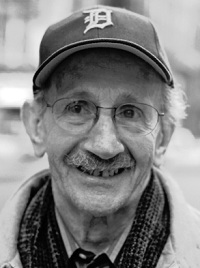 Philip Levine
Philip Levine
1928-2015
Philip Levine (January 10, 1928-February 14, 2015) was a Pulitzer Prize-winning American poet best known for his poems about working-class Detroit. He taught for more than 30 years at the English Department of California State University, Fresno, and held teaching positions at other universities as well. He was appointed to serve as the Poet Laureate of the United States for 2011-2012.
Levine grew up in industrial Detroit, the second of three sons and the first of identical twins of Jewish immigrant parents. His father, Harry Levine, owned a used auto parts business; his mother, Esther Priscol (Prisckulnick) Levine, was a bookseller. When Levine was five years old, his father died. Growing up, he faced the anti-Semitism embodied by the pro-Hitler radio priest Father Coughlin.
Levine started to work in car manufacturing plants at the age of 14. He graduated from Detroit Central High School in 1946 and went to college at Wayne University in Detroit, where he began to write poetry, encouraged by his mother, to whom he later dedicated the book of poems, The Mercy. Levine got his A.B. in 1950 and went to work for Chevrolet and Cadillac in what he calls “stupid jobs.” He married his first wife, Patty Kanterman, in 1951. The marriage lasted until 1953. In 1953, he went to the University of Iowa without registering, studying with poets Robert Lowell and John Berryman, the latter of which Levine called his “one great mentor.” In 1954, he graduated with a mail-order master’s degree with a thesis on John Keats’ “Ode to Indolence,” and married actress Frances J. Artley. He returned to the University of Iowa, teaching technical writing and completing his Master of Fine Arts degree in 1957. The same year, he was awarded the Jones Fellowship in Poetry at Stanford University.
In 1958, he joined the English Department at California State University in Fresno, where he taught until his retirement in 1992. He has also taught at many other universities, among them New York University as Distinguished Writer-in-Residence, at Columbia, Princeton, Brown, Tufts and the University of California at Berkeley.
Levine and his wife had made their homes in Fresno and Brooklyn. He died of pancreatic cancer on February 14, 2015, age 87.
Source: http://en.wikipedia.org/wiki/Philip_Levine_%28poet%29
 Bibliography
Bibliography
Press your browser’s BACK button to return to the previous page.
 Lewis and Clark Expedition
Lewis and Clark Expedition
1774-1809/1770-1838
The Lewis and Clark Expedition, or “Corps of Discovery Expedition” (1804-1806), was the first transcontinental expedition to the Pacific Coast by the United States. Commissioned by President Thomas Jefferson and led by two Virginia-born veterans of Indian wars in the Ohio Valley – Meriwether Lewis and William Clark – the expedition had several goals. Their objects were both scientific and commercial – to study the area’s plants, animal life and geography, and to discover how the region could be exploited economically.
According to Jefferson himself, one goal was to find a “direct & practicable water communication across this continent, for the purposes of commerce with Asia” (the Northwest Passage). Jefferson also placed special importance on declaring U.S. sovereignty over the Native Americans along the Missouri River and getting an accurate sense of the resources in the recently completed Louisiana Purchase.
The expedition was accompanied by a 15-year-old Shoshone Indian woman, Sacagawea, the wife of a French-Canadian fur trader. After crossing the Rocky Mountains, the expedition reached the Pacific Ocean in the area of present-day Oregon (which lay beyond the nation’s new boundaries) in November 1805. They returned in 1806, bringing with them an immense amount of information about the region as well as numerous plant and animal specimens.
Reports about geography, plant and animal life and Indian cultures filled their daily journals. Although Lewis and Clark failed to find a commercial route to Asia, they demonstrated the possibility of overland travel to the Pacific coast. They found Native Americans in the trans-Mississippi West accustomed to dealing with European traders and already connected to global markets. The success of their journey helped to strengthen the idea that United States territory was destined to reach all the way to the Pacific.
Source: http://en.wikipedia.org/wiki/Lewis_and_Clark_Expedition
 Bibliography
Bibliography
Press your browser’s BACK button to return to the previous page.
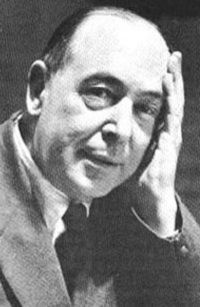 C.S. Lewis
C.S. Lewis
1898-1963
Clive Staples Lewis (November 29, 1898-November 22, 1963), commonly referred to as C.S. Lewis and known to his friends and family as “Jack,” was a novelist, poet, academic, medievalist, literary critic, essayist, lay theologian and Christian apologist from Belfast, Ireland. He is known for both his fictional work – especially The Screwtape Letters, The Chronicles of Narnia and The Space Trilogy – and his nonfiction, such as Mere Christianity, Miracles and The Problem of Pain.
Lewis and fellow novelist J.R.R. Tolkien were close friends. Both authors served on the English faculty at Oxford University and both were active in the informal Oxford literary group known as the “Inklings.”
In 1956, he married the American writer, Joy Davidman, 17 years his junior, who died four years later of cancer at the age of 45. Lewis died as the result of renal failure three years later.
Source: http://en.wikipedia.org/wiki/C._S._Lewis
 Bibliography
Bibliography
Press your browser’s BACK button to return to the previous page.
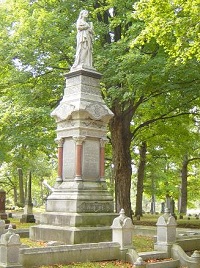 Henry Clay Lewis
Henry Clay Lewis
1825-1850
Henry Clay Lewis was born in Charleston, South Carolina, on June 26, 1825, but moved to Cincinnati at an early age. The death of his mother forced him to drift from one brother’s home to another, until he ended up in Yazoo City, Mississippi (then called Manchester), working on a boat. In Yazoo, he was taken in as a doctor’s apprentice. He went to medical school in Kentucky and returned to Yazoo City to open a practice, which failed from lack of business. He then moved his practice to a swampy, remote area of Louisiana, Madison Parish, where he was inspired to start writing humorous sketches in the Southwestern humorist style, which were published in William T. Porter’s flourishing sporting journal, The Spirit of the Times.
Lewis’ sketches appeared as a collection in book form in 1850, published under the pseudonym “Madison Tensas.” They are a prime example of the Southern grotesque. The main character, the “swamp doctor,” is an old man, but the stories are often assumed to be based on Lewis’ own adventures as a young swamp doctor. Lewis’ depictions of African-Americans are unique for his time. He presents his Black characters with as much pain and grotesqueness as his white characters, steering away from the time’s usual stereotypes.
Lewis drowned on August 5, 1850, while crossing a swamp on a medical journey.
Source: http://www.olemiss.edu/mwp/dir/lewis_henry_clay/
 Bibliography
Bibliography
Press your browser’s BACK button to return to the previous page.
 Matthew Lewis
Matthew Lewis
1775-1818
Matthew Gregory Lewis (July 9, 1775-May 14, 1818), English romance writer and dramatist, often referred to as “Monk” Lewis, was born in London. He was educated for a diplomatic career at Westminster school and at Christ Church, Oxford, spending most of his vacations abroad in the study of modern languages.
In 1794, he proceeded to the Hague as attache to the British embassy. His stay there lasted only a few months, but was marked by the composition, in 10 weeks, of his romance Ambrosio, or the Monk, which was published in the summer of the following year.
The Monk did not interfere with the reception of Lewis into the best English society: He was favorably noticed at court and almost as soon as he came of age he obtained a seat in the House of Commons as member for Hindon, Wilts. After some years, however, during which he never addressed the House, he finally withdrew from his parliamentary career.
His tastes lay wholly in the direction of literature, and The Castle Spectre (1796), The Minister, Rolla (1797) and numerous other operatic and tragic pieces appeared in rapid succession. The Bravo of Venice, a romance translated from the German, was published in 1804; next to The Monk, it is the best-known work of Lewis.
Upon the death of his father, he succeeded to a large fortune and, in 1815, embarked for the West Indies to visit his estates; in the course of this tour, which lasted four months, The Journal of a West Indian Proprietor, published posthumously in 1833, was written.
A second visit to Jamaica was undertaken in 1817 in order that he might become further acquainted with, and able to ameliorate, the condition of the slave population; the fatigues to which he exposed himself in the tropical climate brought on a fever that terminated fatally on the homeward voyage on May 14, 1818.
Source: http://www.1911encyclopedia.org/Matthew_Gregory_Lewis
 Bibliography
Bibliography
Press your browser’s BACK button to return to the previous page.
 Sinclair Lewis
Sinclair Lewis
1885-1951
Harry Sinclair Lewis (February 7, 1885-January 10, 1951) was an American novelist, short story writer and playwright. In 1930. He became the first writer from the United States to be awarded the Nobel Prize in Literature.
Born in the village of Sauk Centre, Minnesota, Lewis began reading books at a young age and kept a diary. In late 1902, Lewis left home for a year at Oberlin Academy (the then-preparatory department of Oberlin College) to qualify for acceptance by Yale University. While at Oberlin, he developed a religious enthusiasm that waxed and waned for much of his remaining teenage years. He entered Yale in 1903 but did not receive his bachelor’s degree until 1908, having taken time off to work at Helicon Home Colony, Upton Sinclair’s cooperative-living colony in Englewood, New Jersey, and to travel to Panama.
Lewis’ earliest published creative work – romantic poetry and short sketches – appeared in The Yale Courant and The Yale Literary Magazine, of which he became an editor. After graduation, Lewis moved from job to job and from place to place in an effort to make ends meet, writing fiction for publication and to chase away boredom. While working for newspapers and publishing houses, he developed a facility for turning out shallow, popular stories that were purchased by a variety of magazines. He also earned money by selling plots to Jack London, including one for the latter’s unfinished novel, The Assassination Bureau, Ltd.
Lewis’ first published book was Hike and the Aeroplane, a Tom Swift-style potboiler that appeared in 1912 under the pseudonym Tom Graham. His first serious novel, Our Mr. Wrenn: The Romantic Adventures of a Gentle Man, appeared in 1914, followed by The Trail of the Hawk: A Comedy of the Seriousness of Life (1915) and The Job (1917). That same year also saw the publication of another potboiler, The Innocents: A Story for Lovers. Free Air, another refurbished serial story, was published in 1919.
Moving to Washington, D.C., Lewis devoted himself to writing. As early as 1916, he began taking notes for a realistic novel about small-town life. Work on that novel continued through mid-1920, when he completed Main Street, which was published on October 23, 1920. Lewis followed up this first great success with Babbitt (1922), a novel that satirized the American commercial culture and boosterism.
Lewis continued his success in the 1920s with Arrowsmith (1925), a novel about the challenges faced by an idealistic doctor. It was awarded the Pulitzer Prize (which Lewis refused). Lewis next published Elmer Gantry (1927), which depicted an evangelical minister as deeply hypocritical. Lewis closed out the decade with Dodsworth (1929), a novel about the most affluent and successful members of American society.
During the late 1920s and 1930s, Lewis wrote many short stories for a variety of magazines and publications. “Little Bear Bongo” (1936), a tale about a bear cub who wanted to escape the circus in search of a better life in the real world, was published in Cosmopolitan magazine. In 1930, Lewis won the Nobel Prize in Literature, the first writer from the United States to receive the award. After winning the Nobel Prize, Lewis wrote 11 more novels, 10 of which appeared in his lifetime.
Lewis died in Rome on January 10, 1951, aged 65, from advanced alcoholism. A final novel, World So Wide (1951), was published posthumously.
Source: http://en.wikipedia.org/wiki/Sinclair_Lewis
 Bibliography
Bibliography
Press your browser’s BACK button to return to the previous page.
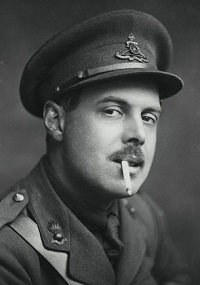 Wyndham Lewis
Wyndham Lewis
1882-1957
Percy Wyndham Lewis was born in Amehurst, Nova Scotia, in 1882. Lewis came to England and was educated at Rugby School and the Slade School of Art (1898-1901). After leaving art college, Lewis spent the next seven years in Europe. When he returned to England in 1909, he began publishing stories, essays, novels and plays.
In 1912, Lewis became the founder of Vorticism, a literary and artistic movement. Members of the group included Charles Nevinson, Henri Gaudier-Brzeska, William Roberts and Alvin Langdon Coburn. In his journal, Blast (1914-15), Lewis attacked the sentimentality of 19th century art and emphasized the value of violence, energy and the machine. In the visual arts, Vorticism was expressed in abstract compositions of bold lines, sharp angles and planes.
From 1916 t o 1918, Lewis served on the Western Front as a battery officer. He was also commissioned by Lord Beaverbrook and the Canadian War Memorials Fund to paint A Canadian Gun Pit. However, his most famous war painting is A Battery Shelled. Lewis later wrote an account of his experiences in the war, entitled Blasting and Bombardiering (1937).
After World War I, Lewis developed right-wing views and was sympathetic to the political changes taking place in Germany and Italy. On the outbreak of World War II, he returned to Canada. In 1951, Lewis went blind and was forced to give up painting. In his later years he concentrated on writing, including the autobiographical Self-Condemned (1954) and The Human Age (1955).
Percy Wyndham Lewis died in 1957.
Source: http://www.spartacus.schoolnet.co.uk/ARTlewis.htm
 Bibliography
Bibliography
Press your browser’s BACK button to return to the previous page.
 Alan Lightman
Alan Lightman
1948-
Alan Lightman (born November 28, 1948) is an American physicist, writer and social entrepreneur. He is a professor at the Massachusetts Institute of Technology and the author of the international bestseller, Einstein’s Dreams. He was the first professor at MIT to receive a joint appointment in the sciences and the humanities.
Lightman was born in Memphis, Tennessee. His father was Richard Lightman, a movie theater owner, and his mother, Jeanne Garretson, a dancing teacher and volunteer Braille typist.
From an early age, he was interested in both science and the arts and, while in high school, began independent science projects and writing poetry. His unusual combination of talents in both science and creative writing drew attention as he won city and statewide science fairs, as well as the statewide competition for the National Council of Teachers of English award. He graduated from White Station High School in Memphis. Lightman received his A.B. degree in physics from Princeton University in 1970, magna cum laude, where he was Phi Beta Kappa. He earned his Ph.D in theoretical physics from the California Institute of Technology in 1974, where he received a National Science Foundation pre-doctoral fellowship.
From 1974 to 1976, Lightman was a postdoctoral fellow in astrophysics at Cornell University. During this period, he began publishing poetry in small literary magazines. He was an assistant professor of astronomy at Harvard University from 1976 to 1979 and a research scientist at the Harvard-Smithsonian Center for Astrophysics from 1979 to 1989. In 1989, Lightman was appointed professor of science and writing and senior lecturer in physics at the Massachusetts Institute of Technology (MIT). He currently teaches at Massachusetts Institute of Technology as Adjunct Professor of Humanities.
Source: http://en.wikipedia.org/wiki/Alan_Lightman
 Bibliography
Bibliography
Press your browser’s BACK button to return to the previous page.
 Alan of Lille
Alan of Lille
c. 1128-1202
Alain de Lille (or Alanus ab Insulis) (c. 1128-1202), French theologian and poet, was born, probably in Lille, some years before 1128.
Little is known of his life. He seems to have taught in the schools of Paris and he attended the Lateran Council in 1179. He afterward inhabited Montpellier, lived for a time outside the walls of the cloister and finally retired to Citeaux, where he died in 1202.
He had a very widespread reputation during his lifetime and his knowledge, more varied than profound, caused him to be called “Doctor universalis.” Among his very numerous works, two poems entitle him to a distinguished place in the Latin literature of the Middle Ages. One of these, the “De planctu naturae” is an ingenious satire on the vices of humanity. He created the allegory of grammatical “conjugation,” which was to have its successors throughout the Middle Ages. “The Anticlaudianus,” a treatise on morals as allegory, the form of which recalls the pamphlet of Claudian against Rufinus, is agreeably versified and relatively pure in its Latinity.
Source: http://en.wikipedia.org/wiki/Alain_de_Lille
 Bibliography
Bibliography
Press your browser’s BACK button to return to the previous page.
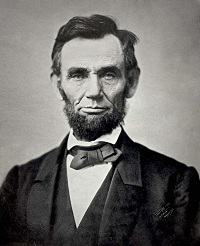 Abraham Lincoln
Abraham Lincoln
1809-1865
The son of a Kentucky frontiersman, Abraham Lincoln had to struggle for a living and for learning. Five months before receiving his party’s nomination for president, he sketched his life: “I was born Feb. 12, 1809, in Hardin County, Kentucky. My parents were both born in Virginia, of undistinguished families – second families, perhaps I should say. My mother, who died in my tenth year, was of a family of the name of Hanks … My father … removed from Kentucky to … Indiana, in my eighth year. … It was a wild region, with many bears and other wild animals still in the woods. There I grew up…. Of course when I came of age I did not know much. Still somehow, I could read, write, and cipher … but that was all.”
Lincoln made extraordinary efforts to attain knowledge while working on a farm, splitting rails for fences and keeping store at New Salem, Illinois. He was a captain in the Black Hawk War, spent eight years in the Illinois legislature and rode the circuit of courts as a lawyer for many years.
He married Mary Todd and they had four boys, only one of whom lived to maturity. In 1858, Lincoln ran against Stephen A. Douglas for senator. He lost the election but, in debating with Douglas, he gained a national reputation that won him the Republican nomination for president in 1860.
As president, he built the Republican Party into a strong national organization. Further, he rallied most of the northern Democrats to the Union cause. On January 1, 1863, he issued the Emancipation Proclamation that declared “forever free” those slaves within the Confederacy.
Lincoln never let the world forget that the Civil War involved an even larger issue. This he stated most movingly in dedicating the military cemetery at Gettysburg: “That we here highly resolve that these dead shall not have died in vain – that this nation, under God, shall have a new birth of freedom – and that government of the people, by the people, for the people, shall not perish from the earth.”
Lincoln won re-election in 1864 as Union military triumphs heralded an end to the war. In his planning for peace, the president was flexible and generous, encouraging Southerners to lay down their arms and join speedily in reunion.
On Good Friday, April 14, 1865, Lincoln was assassinated at Ford’s Theatre in Washington, D.C., by John Wilkes Booth, an actor who somehow thought he was helping the South. The opposite was the result for, with Lincoln’s death, the possibility of peace with magnanimity died.
Source: http://www.whitehouse.gov/about/presidents/abrahamlincoln/
 Bibliography
Bibliography
Press your browser’s BACK button to return to the previous page.
 Vachel Lindsay
Vachel Lindsay
1879-1931
Nicholas Vachel Lindsay was born on November 10, 1879 in Springfield, Illinois, the second of six children and the only son of Dr. Vachel Thomas Lindsay and Esther Catharine Frazee Lindsay. He did not attend school until he was eight. He was taught at home by his mother, who had been a teacher and artist before her marriage. Grimm’s Fairy Tales is said to have been his primer. He graduated from Stuart School in 1893, having skipped the seventh grade, and won several prizes for his writing compositions.
During his youth, Lindsay was encouraged to follow in his father’s footsteps; therefore, as a dutiful son, he enrolled at Hiram College as a pre-medical student in 1897. Three years later, he wrote home and asked his parents to allow him to attend art school. In 1901, he was accepted as a student at the Art Institute of Chicago and began his pursuit of a career as an illustrator. He spent time reading the works of English mystic poet William Blake and writing poetry in earnest.
He moved in 1904 to continue his studies at the New York School of Art and, while there, began to combine poetry and art. After hearing Lindsay recite one of his illustrated poems, “The Tree of the Laughing Bells,” Robert Henri, a painter and teacher at the New York School, suggested to Lindsay that he devote himself to poetry. It was a turning point in the poet’s life.
The years 1906 through 1912 were Lindsay’s troubadour years as he took his poetry to the people. He ventured out into the world on walking tours of the countryside, taking no money with him, instead trading his poetry for food and shelter. In 1920, Lindsay became the first American poet invited to recite at Oxford University and undertook his first national lecturing tour.
Vachel Lindsay died in 1931.
Source: http://www.poemhunter.com/vachel-lindsay/biography/
 Bibliography
Bibliography
Press your browser’s BACK button to return to the previous page.
 George Lippard
George Lippard
1822-1854
George Lippard (April 10, 1822-February 9, 1854) was an author born near Yellow Springs, Pennsylvania. He began to study law at 15 years of age but was never admitted to the bar. His sensational novels evince vigor and imagination but have few other recommendations. He founded the Brotherhood of the Union, a secret charitable and benevolent institution, and wrote a ritual for it. Previous to the Civil War, this order was one of the strongest in the country.
Lippard is described as a brilliant but erratic genius. He was passionately fond of country life and, living with an aunt near Germantown, roamed along the banks of the romantic Wissahickon and wrote much about it. With a strange fancy, he was married at sunrise on the banks of this stream.
His romance novels include: The Ladye Annabel (1842); The Belle of Prairie Eden (1844); Legends of Mexico (1847); Legends of the Revolution (1847); Blanche of Brandywine; The Nazarene; New York – Its Upper Ten and Lower Million; The Quaker City; Paul Ardenheim, or the Monk of Wissahickon; Herbert Tracy; Adonai; and Memoirs of a Preacher. In addition to novels, he published Washington and His Generals and edited The White Banner Quarterly. He was regarded as an eloquent speaker.
Lippard died in Philadelphia, Pennsylvania, on February 9, 1854.
Source: http://www.csustan.edu/english/reuben/pal/chap3/lippard.html
 Bibliography
Bibliography
Press your browser’s BACK button to return to the previous page.
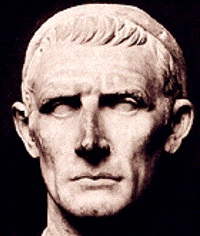 Livy (Titus Livius)
Livy (Titus Livius)
59 BC-17 AD
Titus Livius (59 BC-17 AD) – known as Livy in English – was a Roman historian who wrote a monumental history of Rome and the Roman people. Ab Urbe Condita Libri (Books from the Foundation of the City) cover the period from the earliest legends of Rome well before the traditional foundation in 753 BC, through the reign of Augustus in Livy’s own time. He was on familiar terms with the Julio-Claudian family, advising Augustus’ grandnephew, the future emperor Claudius, as a young man in a letter not long before 14 AD to take up the writing of history. Livy and Augustus’ wife, Livia, were from the same clan in different locations, although not related by blood.
Livy was born as Titus Livius in Patavium in northern Italy, now modern Padua. There is a debate about the year of Titus Livius’ birth, 64 BC or more likely 59 BC.
Livy’s teen years were during the 40s BC, a time that coincided with the civil wars that were occurring throughout the Roman world. It is likely, then, that the Roman civil wars prevented Livy from pursuing a higher education in Rome or going on a grand tour of Greece, as was common for adolescent males during the time.
Titus Livius probably went to Rome in the 30s BC, and it is likely that he spent a large amount of time in the city after this, although it may not have been his primary home. During his time in Rome, he was never a senator nor held any other governmental position. His elementary mistakes in military matters show that he was never a soldier. However, he was educated in philosophy and rhetoric. It seems that Livy had the financial resources and means to live an independent life. He devoted a large part of his life to his writings, which he was able to do because of his financial freedom.
Perhaps Livy’s most famous work was his history of Rome. In it he explains the complete history of the city of Rome, from its foundation to the death of Augustus. Because he was writing under the emperor Augustus, Livy’s history emphasizes the great triumphs of Rome. He wrote his history with embellished accounts of Roman heroism in order to promote the new type of government implemented by Augustus when he became emperor. In Livy’s preface to his history, he said that he did not care whether his personal fame remained in darkness, as long as his work helped to “preserve the memory of the deeds of the world’s pre-eminent nation.”
Because Livy was writing about events that had occurred hundreds of years beforehand, the value of his history was questionable, although many Romans came to believe what he wrote to be the true history of Rome’s foundation. He had also written other works, including an essay in the form of a letter to his son, and numerous dialogues, most likely using Cicero as a model.
Titus Livius is said to have died in the year 17 AD in his home city of Patavium.
Source: http://en.wikipedia.org/wiki/Livy
 Bibliography
Bibliography
Press your browser’s BACK button to return to the previous page.
 Alain LeRoy Locke
Alain LeRoy Locke
1885-1954
Alain LeRoy Locke (September 13, 1885-June 9, 1954) was an American writer, philosopher, educator and patron of the arts. He is best known for his writings on and about the Harlem Renaissance. He is regarded as the “Father of the Harlem Renaissance.” His philosophy served as a strong motivating force in keeping the energy and passion of the Movement at the forefront.
Alain Locke was born in Pennsylvania to Pliny Ishmael Locke (1850-1892) and Mary Hawkins Locke (1853-1922). In 1902, he graduated from Central High School in Philadelphia, second in his class. He also attended Philadelphia School of Pedagogy. In 1907, Locke graduated from Harvard University with degrees in English and philosophy. He was the first African-American Rhodes Scholar. He formed part of the Phi Beta Kappa Society. Locke was denied admission to several Oxford colleges because of his skin color before finally being admitted to Hertford College, where he studied literature, philosophy, Greek and Latin from 1907-1910. In 1910, he attended the University of Berlin, where he studied philosophy. Locke attended the College de France in Paris in 1911.
Locke received an assistant professorship in English at Howard University, in Washington, D.C. There, he interacted with W.E.B. Du Bois and Carter Woodson, who helped develop his philosophy. While at Howard University, he became a member of Phi Beta Sigma Fraternity Inc.
Locke returned to Harvard in 1916 to work on his doctoral dissertation, The Problem of Classification in the Theory of Value. In his thesis, he discusses the causes of opinions and social biases, and that these are not objectively true or false, and therefore not universal. Locke received his Ph.D in philosophy in 1918. he returned to Howard University as the chair of the department of philosophy, a position he held until his retirement in 1953.
Locke promoted African-American artists, writers and musicians, encouraging them to look to Africa as an inspiration for their works. He encouraged them to depict African and African-American subjects and to draw on their history for subject material.
Locke edited the March 1925 issue of the periodical Survey Graphic, a special on Harlem and the Harlem Renaissance, which helped educate white readers about the flourishing culture there. Later that year, he expanded the issue into The New Negro, a collection of writings by African-Americans, which would become one of his best-known works. His philosophy of The New Negro was grounded in the concept of race-building. Its most important component is overall awareness of the potential Black equality: No longer would Blacks allow themselves to adjust themselves or comply with unreasonable white requests.
Source: http://en.wikipedia.org/wiki/Alain_LeRoy_Locke
 Bibliography
Bibliography
Press your browser’s BACK button to return to the previous page.
 John Locke
John Locke
1632-1704
John Locke (August 29, 1632-October 28, 1704), widely known as the “Father of Liberalism,” was an English philosopher and physician regarded as one of the most influential of Enlightenment thinkers. Considered one of the first of the British empiricists, following the tradition of Francis Bacon, he is equally important to social contract theory. His work had a great impact upon the development of epistemology and political philosophy. His writings influenced Voltaire and Rousseau, many Scottish Enlightenment thinkers, as well as the American revolutionaries. His contributions to classical republicanism and liberal theory are reflected in the American Declaration of Independence.
Locke was born in a small thatched cottage by the church in Wrington, Somerset, about 12 miles from Bristol. In 1647, Locke was sent to the prestigious Westminster School in London. After completing his studies there, he was admitted to Christ Church, Oxford.
Locke was awarded a bachelor’s degree in 1656 and a master’s degree in 1658. He obtained a bachelor of medicine in 1674, having studied medicine extensively during his time at Oxford. In 1666, he met Lord Anthony Ashley Cooper, 1st Earl of Shaftesbury, who had come to Oxford seeking treatment for a liver infection. Cooper was impressed with Locke and persuaded him to become part of his retinue.
Locke had been looking for a career and, in 1667, moved into Shaftesbury’s home at Exeter House in London to serve as Lord Ashley’s personal physician. Locke’s medical knowledge was put to the test when Shaftesbury’s liver infection became life-threatening. Locke coordinated the advice of several physicians and was probably instrumental in persuading Shaftesbury to undergo an operation (then life-threatening itself) to remove a cyst. Shaftesbury survived and prospered, crediting Locke with saving his life.
Locke became involved in politics when Shaftesbury became Lord Chancellor in 1672. Around this time, most likely at Shaftesbury’s prompting, Locke composed the bulk of Two Treatises of Government. He fled to the Netherlands in 1683, however, under strong suspicion of involvement in the Rye House Plot, although there is little evidence to suggest that he was directly involved in the scheme. In the Netherlands, Locke had time to return to his writing, spending a great deal of time re-working “The Essay” and composing the “Letter on Toleration.” Locke did not return home until 1688 after the “Glorious Revolution.” The bulk of Locke’s publishing took place upon his return from exile – his aforementioned “Essay Concerning Human Understanding,” the “Two Treatises of Civil Government” and “A Letter Concerning Toleration” all appearing in quick succession.
He died on October 28, 1704.
Source: http://en.wikipedia.org/wiki/John_Locke
 Bibliography
Bibliography
Press your browser’s BACK button to return to the previous page.
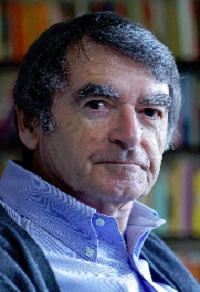 David Lodge
David Lodge
1935-
David John Lodge (born January 28, 1935, at Brockley, London, England) is an English author.
In his novels, Lodge often satirizes academia in general and, in particular, the humanities. He was brought up Catholic and has described himself as an “agnostic Catholic.” Many of his characters are Catholic and their Catholicism is a major theme. Examples include his novels, The British Museum Is Falling Down (1965), How Far Can You Go? (1980) and Paradise News (1991).
Lodge’s first published novel, The Picturegoers (1960), draws on his early experiences in “Brickley” (based on Brockley in southeast London) , which are also described in his novel, Therapy. World War II forced Lodge and his mother to evacuate to Surrey and Cornwall.
Lodge studied at University College London, obtaining a B.A. (with honors) in 1955. In 1959, he married Mary Frances Jacob and received an M.A. from UCL. He went on to earn a Ph.D at the University of Birmingham and taught English literature there from 1960 until 1987, being particularly noted for his lectures on Victorian fiction. From 1964-65 he was Harkness Fellow in the United States.
He retired from his post at Birmingham in 1987 to become a full-time writer but retains the title of Honorary Professor of Modern English Literature at the University. He lives in Birmingham.
Source: http://en.wikipedia.org/wiki/David_Lodge_%28author%29
 Bibliography
Bibliography
Press your browser’s BACK button to return to the previous page.
 James W. Loewen
James W. Loewen
1942-2021
James (Jim) W. Loewen (born February 6, 1942) was a sociologist, historian and author whose best-known work was Lies My Teacher Told Me: Everything Your American History Textbook Got Wrong (1995).
Loewen was born to Winifred and Dr. David F. Loewen in 1942. His mother was a librarian and teacher; his father was a medical director. Loewen grew up in Decatur, Illinois. He was a National Merit Scholar as a graduate in 1960 from MacArthur High School.
He attended Carleton College. In 1963, as a junior, he spent a semester in Mississippi, an experience in a different culture that led to his questioning what he had been taught about United States history. He was intrigued by learning about the unique place of 19th century Chinese immigrants and their descendants in Mississippi culture, commonly thought of as biracial. He went on to earn a Ph.D in sociology from Harvard University based on his research on the Chinese in Mississippi.
Loewen first taught in Mississippi at Tougaloo College, a historically Black college founded by the American Missionary Association after the American Civil War. For 20 years, Loewen taught about racism at the University of Vermont. Since 1997, he was been a Visiting Professor of Sociology at The Catholic University of America in Washington, D.C.
Loewen died on August 19, 2021 at Suburban Hospital in Bethesda, Maryland. He was 79.
Source: http://en.wikipedia.org/wiki/James_Loewen
 Bibliography
Bibliography
Press your browser’s BACK button to return to the previous page.
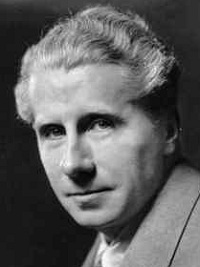 Hugh Lofting
Hugh Lofting
1886-1947
Hugh John Lofting (January 14, 1886-September 26, 1947) was a British author, trained as a civil engineer, who created the character of Doctor Dolittle – one of the classics of children’s literature.
Lofting was born in Maidenhead, England, to English and Irish parents. His early education was at Mount St. Mary’s College in Sheffield, after which he went to the United States in 1904, completing a degree in civil engineering at the Massachusetts Institute of Technology. He also studied at London Polytechnic. He traveled widely as a civil engineer, in Canada, on the Lagos Railway and Railways of Havana, Cuba. In 1912, he married Flora Small; they had two children.
He enlisted in the Irish Guards to serve in World War I. Not wishing to write to his children of the brutality of the war, he wrote imaginative letters that were the foundation of the successful Doctor Dolittle novels for children.
Seriously wounded in the war, he moved with his family to Killingworth, Connecticut, in the United States, in 1917. He served in the British Ministry of War Information. His first wife died in 1927; his second wife died in 1928. He married Josephine Fricker in 1935; they had a son named Christopher, who was the executor of his literary estate.
Source: http://en.wikipedia.org/wiki/Hugh_Lofting
 Bibliography
Bibliography
Press your browser’s BACK button to return to the previous page.
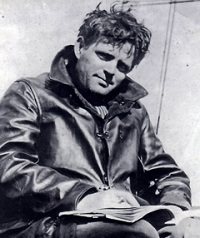 Jack London
Jack London
1876-1916
Jack London, the illegitimate son of a wandering astrologer, was born in San Francisco in 1876. He left school at 14 and, after working as a sailor, he experienced periods of unemployment and poverty. London enjoyed writing and, as a teenager, won a competition hosted by The San Francisco Morning Call with the short story, “Typhoon off the Coast of Japan.”
London spent spells working as a sailor and gold miner before attempting to become a full-time writer. His first story, “To the Man on Trail,” was published by The Overland Monthly in 1899. His adventure stories soon had a wide following and they were accepted by other magazines such as The Atlantic Monthly, Cosmopolitan and McClure’s Magazine. London still found time for politics and, in 1901, campaigned unsuccessfully as the socialist candidate for the post of mayor of Oakland.
In July 1902, London moved to England, where he worked with the Social Democratic Federation. He was shocked by the poverty he saw and wrote The People of the Abyss, a book about slum life in London. He later wrote that it was his favorite book. London returned to the United States in 1903. Later that year, he and Anna Strunsky wrote a joint novel, The Kempton-Wace Letters (1903).
London’s novel, The Call of the Wild, appeared soon afterward. It was an immediate bestseller. The first edition of 10,000 copies sold out in 24 hours. Unfortunately for London, he had sold the rights of the book to his publisher for a flat fee of $2,000.
London followed The Call of the Wild with The Sea-Wolf (1904), The War of the Classes (1905), The Iron Heel (1907) and Martin Eden (1909). London, a heavy drinker, wrote about the problems of alcohol in his semi-autobiographical novel, John Barleycorn (1913).
London was disappointed by the failure of the socialist movement to prevent World War I that began in 1914. However, unlike most members of the American Socialist Party, London did not favor the United States remaining neutral. London, who was proud of his English heritage, was a strong supporter of the Allies against the Central Powers.
London’s health deteriorated rapidly in 1916. He was suffering from uraemia, a condition that impairs the functioning of the kidneys. On November 21, 1916, he died from a morphine overdose.
Source: http://www.spartacus.schoolnet.co.uk/JlondonJ.htm
 Bibliography
Bibliography
Press your browser’s BACK button to return to the previous page.
 Henry Wadsworth Longfellow
Henry Wadsworth Longfellow
1807-1882
Henry Wadsworth Longfellow (February 27, 1807-March 24, 1882) was an American poet and educator whose works include: “Paul Revere’s Ride,” “The Song of Hiawatha” and “Evangeline.” He was also the first American to translate Dante Alighieri’s The Divine Comedy and was one of the five Fireside Poets.
Longfellow predominantly wrote lyric poems that are known for their musicality and that often presented stories of mythology and legend. He became the most popular American poet of his day and also had success overseas. He has been criticized, however, for imitating European styles and writing specifically for the masses.
Longfellow was born in Portland, Maine, then part of Massachusetts, and studied at Bowdoin College. After spending time in Europe, he became a professor at Bowdoin and, later, at Harvard College. His first major poetry collections were Voices of the Night (1839) and Ballads and Other Poems (1841). Longfellow retired from teaching in 1854 to focus on his writing, living the remainder of his life in Cambridge, Massachusetts, in a former headquarters of George Washington. His first wife, Mary Potter, died in 1835 after a miscarriage. His second wife, Frances Appleton, died in 1861 after sustaining burns from her dress catching fire. After her death, Longfellow had difficulty writing poetry for a time and focused on his translation.
He died in 1882.
Source: http://en.wikipedia.org/wiki/Henry_Wadsworth_Longfellow
 Bibliography
Bibliography
Press your browser’s BACK button to return to the previous page.
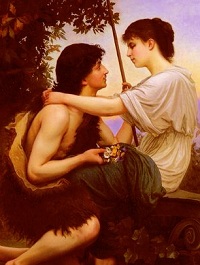 Longus
Longus
c. 100-200 AD
Longus, sometimes Longos, was the author of an ancient Greek novel or romance, Daphnis and Chloe. Very little is known of his life and it is assumed that he lived on the isle of Lesbos (setting for Daphnis and Chloe) during the 2nd century AD.
It has been suggested that the name Longus is merely a misinterpretation of the last word of Daphnis and Chloe’s title in the Florentine manuscript. If his name was really Longus, he was probably a freedman of some Roman family that bore the name as a cognomen.
Source: http://en.wikipedia.org/wiki/Longus
 Bibliography
Bibliography
Press your browser’s BACK button to return to the previous page.
 Federico Lorca
Federico Lorca
1898-1936
Federico del Sagrado Corazon de Jesus Garcia Lorca (June 5, 1898-August 19, 1936) was a Spanish poet, dramatist and theatre director. He was born in Fuente Vaqueros, a small town a few miles west of Granada, southern Spain. In 1915, after graduating from secondary school, Garcia Lorca attended Sacred Heart University. During this time, his studies included law, literature and composition.
In 1919-20, he wrote and staged his first play, El maleficio de la mariposa (The Butterfly’s Evil Spell). Garcia Lorca’s first book of poems was published in 1921, collecting work written from 1918 and selected with the help of his brother, Francisco.
Over the next few years, Garcia Lorca became increasingly involved in Spain’s avant-garde. He published poetry collections, including Canciones (Songs) and Romancero Gitano (Gypsy Ballads, 1928), which became his best-known book of poetry. His second play, Mariana Pineda, opened to great acclaim in Barcelona in 1927. In 1926, Garcia Lorca wrote the play, The Shoemaker’s Prodigious Wife, which would not be performed until the early 1930s.
In June 1929, Garcia Lorca travelled to America with Fernando de los Rios. They stayed mostly in New York City, where Rios started a lecture tour and Garcia Lorca enrolled at Columbia University School of General Studies, funded by his parents. He studied English but, as before, was more absorbed by writing than study. He also spent time in Vermont and later in Havana, Cuba. His collection, Poeta en Nueva York (A Poet in New York, published posthumously in 1942), explores alienation and isolation through some graphically experimental poetic techniques and was influenced by the Wall Street crash, which he personally witnessed. His play of this time, El Publico (The Public), was not published until the late 1970s.
While touring in Spain with La Barraca, Garcia Lorca wrote his now best-known plays, the Rural Trilogy of Bodas de Sangre (Blood Wedding), Yerma and La Casa de Bernarda Alba (The House of Bernarda Alba), all of which rebelled against the norms of bourgeois Spanish society.
His last poetic work, Sonnets to His Dark Love (1936), was inspired by a passion for Rafael Rodriguez Rapun, secretary of La Barraca. He later wrote: When Five Years Pass (Asi que pasen cinco anos, 1931), Blood Wedding (Bodas de sangre, 1932), Yerma (1934) and Divan del Tamarit (1931-1936).
The poet lived in the Huerta de San Vicente in the days just before his arrest and assassination in August 1936.
Source: http://en.wikipedia.org/wiki/Federico_Garc%C3%ADa_Lorca
 Bibliography
Bibliography
Press your browser’s BACK button to return to the previous page.
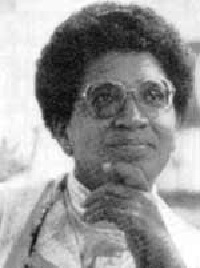 Audre Lorde
Audre Lorde
1934-1992
Audre Lorde (February 18, 1934-November 17, 1992) was a Caribbean-American writer, poet and activist.
Lorde was born in New York City to Caribbean immigrants from Grenada, Frederick Byron Lorde (called Byron) and Linda Gertrude Belmar Lorde, who settled in Harlem. Nearsighted to the point of being legally blind, and the youngest of three daughters, Lorde grew up hearing her mother’s stories about the West Indies. She learned to talk while she learned to read, at the age of four, and her mother taught her to write at around the same time. She wrote her first poem when she was in eighth grade.
Born Audrey Geraldine Lorde, she chose to drop the “y” from her name while still a child, explaining in Zami: A New Spelling of My Name that she was more interested in the artistic symmetry of the “e-endings” in the two side-by-side names, “Audre Lorde,” than in spelling her name the way her parents had intended.
After graduating from Hunter College High School and experiencing the grief of her best friend Genevieve “Gennie” Thompson’s death, Lorde immediately left her parents’ home and became estranged from her family. She attended Hunter College from 1954 to 1959 and graduated with a bachelor’s degree. While studying library science, Lorde supported herself by working various odd jobs such as factory worker, ghost writer, social worker, X-ray technician, medical clerk and arts and crafts supervisor, moving out of Harlem to Stamford, Connecticut.
She furthered her education at Columbia University, earning a master’s degree in library science in 1961. She also worked during this time as a librarian at Mount Vernon Public Library. In 1966, Lorde became head librarian at Town School Library in New York City, where she remained until 1968. In 1968 Lorde was writer-in-residence at Tougaloo College in Mississippi.
Lorde died on November 17, 1992, in St. Croix, of liver cancer, though she had dealt with a 14-year struggle with breast cancer. She was 58.
Source: http://en.wikipedia.org/wiki/Audre_Lorde
 Bibliography
Bibliography
Press your browser’s BACK button to return to the previous page.
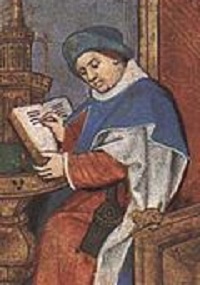 Guillaume de Lorris
Guillaume de Lorris
c. 1200-c. 1240
Guillaume de Lorris (c. 1200-c. 1240) was a French scholar and poet from Lorris.
He was the author of the first section of the “Roman de la Rose.” Little is known about him other than that he wrote the earlier section of the poem around 1230 and that the work was completed 40 years later by Jean de Meun.
Source: http://en.wikipedia.org/wiki/Guillaume_de_Lorris
 Bibliography
Bibliography
Press your browser’s BACK button to return to the previous page.
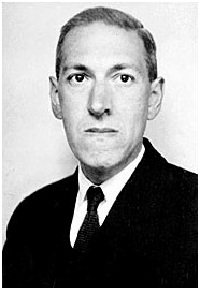 H.P. Lovecraft
H.P. Lovecraft
1890-1937
Howard Phillips “H.P.” Lovecraft (August 20, 1890-March 15, 1937) was an American author of horror, fantasy and science fiction, especially the subgenre known as weird fiction.
Lovecraft was born in his family home at 194 Angell Street in Providence, Rhode Island. He was the only child of Winfield Scott Lovecraft, a traveling salesman of jewelry and precious metals, and Sarah Susan Phillips Lovecraft, who could trace her ancestry in America back to the Massachusetts Bay Colony in 1631.
Lovecraft was frequently ill as a child, at least some of which was certainly psychosomatic, although he attributed his various ailments to physical causes only. Due to his sickly condition and his undisciplined, argumentative nature, he barely attended school until he was eight years old, and then was withdrawn after a year. He read voraciously during this period and became especially enamored of chemistry and astronomy. He produced several hectographed publications with a limited circulation, beginning in 1899 in The Scientific Gazette. Four years later, he returned to public school at Hope High School (Rhode Island). Beginning in his early life, Lovecraft is believed to have suffered from night terrors, a rare parasomnia disorder; he believed himself to be assaulted at night by horrific “night gaunts.”
Lovecraft wrote some fiction as a youth but, from 1908 until 1913, his output was primarily poetry. During that time, he lived a hermit’s existence. This changed when he wrote a letter to The Argosy, a pulp magazine, complaining about the insipidness of the love stories of one of the publication’s popular writers. The ensuing debate in the magazine’s letters column caught the eye of Edward F. Daas, president of the United Amateur Press Association (UAPA), who invited Lovecraft to join them in 1914. The UAPA reinvigorated Lovecraft and incited him to contribute many poems and essays. In 1917, at the prodding of correspondents, he returned to fiction with more polished stories, such as “The Tomb” and “Dagon.” The latter was his first professionally published work, appearing in W. Paul Cook’s The Vagrant (November 1919) and Weird Tales in 1923.
In the final decade of his life, he produced almost all of his best-known short stories for the leading pulp publications of the day (primarily Weird Tales), as well as longer efforts, such as “The Case of Charles Dexter Ward” and “At the Mountains of Madness.” He frequently revised work for other authors and did a large amount of ghost-writing, including “The Mound,” “Winged Death” and “Under the Pyramids” (also known as “Imprisoned with the Pharaohs”) and “The Diary of Alonzo Typer.”
In 1936, Lovecraft was diagnosed with cancer of the intestine and also suffered from Bright’s disease and malnutrition. He lived in constant pain until his death on March 15, 1937, in Providence.
Source: http://en.wikipedia.org/wiki/H._P._Lovecraft
 Bibliography
Bibliography
Press your browser’s BACK button to return to the previous page.
 Richard Lovelace
Richard Lovelace
1618-1658
Richard Lovelace was born into an old and wealthy Kentish family in 1618 in Woolwich. He was the eldest son of Sir William Lovelace, who had served in the Low Countries and was killed in action in 1627. He was educated at Charterhouse School and at Gloucester Hall, Oxford. He was attractive, handsome and witty, the very model of a courtier. His comedy, The Scholar, was acted at Oxford in 1636. King Charles I and Queen Henrietta Maria admired his demeanor so much when they visited Oxford in the same year that they had him created M.A. A key figure at court and close to the king, Lovelace took part in the king’s military expeditions to Scotland in 1639-40. After the failure of the campaign, he withdrew to his estates in Kent, where he remained until 1642. Presumably, Lovelace made Sir John Suckling’s acquaintance at this time.
In April 1642, Lovelace presented a Royalist petition to Parliament favoring the restoration of the Anglican bishops who had been excluded from the Long Parliament. He thus aligned himself with such royalist upstarts as Sir Edmund Dering (whose petition had already landed him in jail). Lovelace was imprisoned in Westminster Gatehouse from April 30 to June 21, 1642. While in prison, Lovelace wrote “To Althea. From Prison,” which includes the famous words: “Stone walls do not a prison make, nor iron bars a cage.”
Following his release, Lovelace lived briefly in London, after which he removed himself to the Low Countries and France until after King Charles’ capture at Oxford in 1646. Lovelace left the field when he was wounded at the battle of Dunkirk. He returned to (Cromwell’s) England in 1647. He was committed by Parliament to Peterhouse Prison, Aldersgate, in October 1648, probably for his connection with some disturbances in Kent. Released from prison in April 1649, Lovelace published Lucasta. The “Lucasta” of the poems was Lucy Sacherevell, whom Lovelace liked to call “Lux casta.” Upon hearing rumors that Lovelace had died of the wounds he received at Dunkirk, she married another.
Financially ruined by his support of the royalist cause, Lovelace lived on charity and died in poverty in 1658. He was buried at St. Bride’s, one of the churches that burned down in the Great Fire of London in 1666. Lucasta: Posthume Poems was published the year after Lovelace’s death.
Source: http://www.luminarium.org/sevenlit/lovelace/lovebio.htm
 Bibliography
Bibliography
Press your browser’s BACK button to return to the previous page.
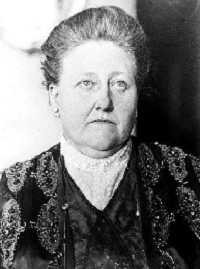 Amy Lowell
Amy Lowell
1874-1925
Amy Lawrence Lowell (February 9, 1874-May 12, 1925) was an American poet of the imagist school from Brookline, Massachusetts, who posthumously won the Pulitzer Prize for Poetry in 1926.
Lowell was born into Brookline’s prominent Lowell family. One brother, Percival Lowell, was a famous astronomer who predicted the existence of the dwarf planet Pluto and believed the canals on Mars showed it hosted living intelligence; another brother, Abbott Lawrence Lowell, served as president of Harvard University.
She never attended college because her family did not consider it proper for a woman, but she compensated for this with avid reading and near-obsessive book collecting. She lived as a socialite and travelled widely, turning to poetry in 1902 after being inspired by a performance of Eleonora Duse in Europe.
Lowell was said to be lesbian and, in 1912, she and actress Ada Dwyer Russell were reputed to be lovers. Russell is believed to be the subject of her more erotic work, most notably the love poems contained in Two Speak Together, a subsection of Pictures of the Floating World. The two women traveled to England together, where Lowell met Ezra Pound, who at once became a major influence and a major critic of her work.
Lowell died of a cerebral hemorrhage in 1925 at the age of 51. The following year, she was awarded the Pulitzer Prize for Poetry for What’s o’Clock? That collection included the patriotic poem, “Lilacs.”
Source: http://en.wikipedia.org/wiki/Amy_Lowell
 Bibliography
Bibliography
Press your browser’s BACK button to return to the previous page.
 James Russell Lowell
James Russell Lowell
1819-1891
James Russell Lowell (February 22, 1819-August 12, 1891) was an American Romantic poet, critic, editor and diplomat. He is associated with the Fireside Poets, a group of New England writers who were among the first American poets to rival the popularity of British poets. These poets usually used conventional forms and meters in their poetry, making them suitable for families entertaining at their fireside.
Lowell graduated from Harvard College in 1838, despite his reputation as a troublemaker, and went on to earn a law degree from Harvard Law School. He published his first collection of poetry in 1841 and married Maria White in 1844. He and his wife had several children, though only one survived past childhood. The couple soon became involved in the movement to abolish slavery, with Lowell using poetry to express his anti-slavery views and taking a job in Philadelphia, Pennsylvania, as the editor of an abolitionist newspaper. After moving back to Cambridge, Lowell was one of the founders of a journal called The Pioneer, which lasted only three issues. He gained notoriety in 1848 with the publication of “A Fable for Critics,” a book-length poem satirizing contemporary critics and poets. The same year, he published The Biglow Papers, which increased his fame. He would publish several other poetry and essay collections throughout his literary career.
Lowell believed that the poet played an important role as a prophet and critic of society. He used poetry for reform, particularly in abolitionism. However, Lowell’s commitment to the anti-slavery cause wavered over the years, as did his opinion of African-Americans. Lowell attempted to emulate the true Yankee accent in the dialogue of his characters, particularly in The Biglow Papers. This depiction of the dialect, as well as Lowell’s many satires, were an inspiration to writers like Mark Twain and H.L. Mencken.
Maria White died in 1853 and Lowell accepted a professorship of languages at Harvard in 1854. He traveled to Europe before officially assuming his role in 1856; he continued to teach there for 20 years. He married his second wife, Frances Dunlap, shortly thereafter in 1857. That year, Lowell also became editor of The Atlantic Monthly. It was not until 20 years later that Lowell received his first political appointment: The ambassadorship to Spain and, later, to England. He spent his last years in Cambridge, in the same estate where he was born, where he also died in 1891.
Source: http://en.wikipedia.org/wiki/James_Russell_Lowell
 Bibliography
Bibliography
Press your browser’s BACK button to return to the previous page.
 Robert Lowell
Robert Lowell
1917-1977
Robert Traill Spence Lowell IV (March 1, 1917-September 12, 1977) was an American poet, considered the founder of the confessional poetry movement. He was appointed the sixth Poet Laureate Consultant in Poetry to the Library of Congress, where he served from 1947 until 1948. He won the Pulitzer Prize in both 1947 and 1974, the National Book Award in 1960 and the National Book Critics Circle Award in 1977.
Lowell was born in Boston, Massachusetts, to a Boston Brahmin family that included poets Amy Lowell and James Russell Lowell. His mother, Charlotte Winslow, was a descendant of William Samuel Johnson, a signer of the U.S. Constitution, along with Jonathan Edwards, the famed Calvinist theologian, Anne Hutchinson, the Puritan preacher and healer, Robert Livingston the Elder, Thomas Dudley, the second governor of Massachusetts and Mayflower passengers James Chilton and his daughter, Mary Chilton.
He received his high school education at St. Mark’s School, a prominent prep-school in Southborough, Massachusetts. Then Lowell attended Harvard College for two years before transferring to Kenyon College in Gambier, Ohio, to study under John Crowe Ransom and Allen Tate.
From 1950 to 1953, Lowell taught in the well-reputed Iowa Writers’ Workshop at the University of Iowa. Later, Donald James Winslow hired Lowell to teach at Boston University. Over the years, he taught at a number of other universities, including the University of Cincinnati, Yale University, Harvard University and the New School for Social Research.
By 1967, he was the most public, well-known American poet; in June, he appeared on the cover of Time magazine as part of a lengthy cover story on American poetry in which he was praised as “the best American poet of his generation.”
Lowell died in 1977, having suffered a heart attack in a cab in New York City on his way to see his ex-wife, Elizabeth Hardwick.
Source: http://en.wikipedia.org/wiki/Robert_Lowell
 Bibliography
Bibliography
Press your browser’s BACK button to return to the previous page.
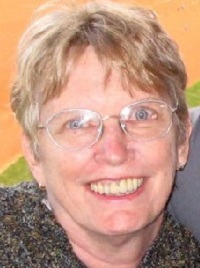 Lois Lowry
Lois Lowry
1937-
Lois Lowry (born Lois Ann Hammersberg on March 20, 1937) is an American author of children’s literature. She began her career as a photographer and a freelance journalist during the early 1970s. Her work as a journalist drew the attention of the publishing company, Houghton Mifflin, which encouraged her to write her first children’s book, A Summer to Die, published in 1977 (when Lowry was 40 years old). She has since written more than 30 books for children and published an autobiography. Two of her works have been awarded the prestigious Newbery Medal: Number the Stars, in 1990, and The Giver, in 1993.
As an author, Lowry is known for writing about difficult subject matters within her works for children. She has explored such complex issues as racism, terminal illness, murder and the Holocaust, among other challenging topics. She has also explored very controversial issues of questioning authority, such as in The Giver Trilogy. Her writing on such matters has brought her both praise and criticism. In particular, The Giver has been met with a diversity of reactions from schools in America, some of which have adopted her book as a part of the mandatory curriculum, while others have prohibited the book’s inclusion in classroom studies.
Source: http://en.wikipedia.org/wiki/Lois_Lowry
 Bibliography
Bibliography
Press your browser’s BACK button to return to the previous page.
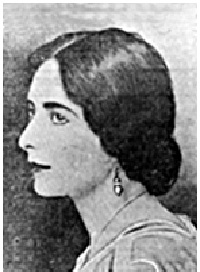 Mina Loy
Mina Loy
1882-1966
Mina Loy (December 27, 1882-September 25, 1966) was an artist, poet, playwright, novelist, Futurist, actress, Christian Scientist, a bohemian and a designer of lamps. She was one of the last of the first-generation modernists to achieve posthumous recognition. Her poetry was admired by T.S. Eliot, Ezra Pound, William Carlos Williams, Basil Bunting, Gertrude Stein, Francis Picabia and Yvor Winters, among others.
Loy was born Mina Gertrude Lowry in London, England. Her mother, Julia Bryan, was English, and her father, Sigmund Lowry, was a Hungarian Jew. Upon leaving school at age 17, she moved to Munich and studied painting for two years. When she returned to London, she continued to study painting, once having Augustus John as a teacher. During her studies, she became familiar with the latest advanced theories in Europe, such as that of Nietzsche, Bergson and Freud, as well as teachings of the East. She moved to Paris, France, with Stephen Haweis, who studied with her at the Academie Colarossi. The couple married in 1903. Loy is first cited using her new last name in 1904, when she exhibited six watercolor paintings at the Salon d’Automne in Paris. Loy and Haweis had their first child, Oda, in 1904. Oda died on her first birthday.
In 1907, Loy and Haweis moved to Florence, Italy, where they lived more-or-less separate lives, becoming estranged. Despite drifting apart, they had two more children: Joella in 1907 and Giles in 1909.
Loy’s extremely original poems started to frequent smaller magazines such as Rogue, attracting the attention of the New York avant-garde. Once her work started to gain momentum, she began to publish poems and articles in more significant New York publications. In 1914, “Aphorisms on Futurism” was published in Alfred Stieglitz’s Camera Work. “Parturition,” her graphic depiction of childbirth, was printed in Trend.
In July 1915, Loy began to write what would be later known as Songs to Joannes (originally Love Songs), a collection of modernist, avant-garde love poetry about her disenchantment with Giovanni Papini, another founding Futurist with whom Loy had been in a romantic relationship in Florence. She also unleashed criticism against supposedly superior theories held by fellow artists. In 1918, Loy penned her polemic, “Feminist Manifesto,” at least partly in response to the misogyny of Futurism’s founder, F.T. Marinetti.
In 1936, Loy returned to New York and lived for a time with her daughter and her lesbian lover in Manhattan. She moved to the Bowery, where she became interested in the Bowery bums, writing poems and creating found-art collages. In 1946, she became a naturalized citizen of the United States. Her second and last book, Lunar Baedeker & Time Tables, appeared in 1958. She exhibited her found-art constructions in New York in 1951 and at the Bodley Gallery in 1959. In 1953, Loy moved to Aspen, Colorado, where her daughters Joella and Fabienne were already living; Joella had married the Bauhaus artist and typographer, Herbert Bayer.
In Colorado, she continued to write and work on her junk collages up until her death at the age of 83, in Aspen. Loy’s novel, Insel, was published posthumously.
Source: http://en.wikipedia.org/wiki/Mina_Loy
 Bibliography
Bibliography
Press your browser’s BACK button to return to the previous page.
 Ernst Lubitsch
Ernst Lubitsch
1892-1947
Ernst Lubitsch (January 29, 1892, Berlin-November 30, 1947, Hollywood) was the son of a prosperous tailor. He was drawn to the stage while participating in plays staged by his high school, which he quit at 16. To satisfy both his own urge to act and his father’s desire that he take over the family business, he began leading a double life, working as a bookkeeper at his father’s store by day and appearing in cabarets and music halls by night.
In 1911, he joined Max Reinhardt’s famous Deutsches Theater, where he rapidly advanced from bit parts to character leads. To supplement his income, he took a job in 1912 as an apprentice and general-purpose handyman at Berlin’s Bioscope film studios. The following year, he began appearing in a series of film comedies emphasizing ethnic Jewish humor, in which he played a character named Meyer. He became very successful as a comedian and soon began writing and directing his own films. Gradually, Lubitsch abandoned acting to concentrate on directing and, in 1918, he made his mark as a serious director with Die Augen der Mummie Ma (The Eyes of the Mummy), a tragic drama starring Pola Negri. That same year, he scored an international box-office hit with Carmen (Gypsy Blood), also starring Negri. But these early achievements could not compare with his great triumph of 1919, Die Austernprinzessin (The Oyster Princess), a sparkling satire caricaturing American manners.
His reputation as a grand master of world cinema reached a new peak after the release of his spectacles Madame Du Barry (Passion, 1919) and Anna Boleyn (Deception, 1920). In December 1921, Lubitsch made his first trip to America to promote his film, Das Weib des Pharao (The Loves of Pharaoh).
Late the following year, he returned to America at the request of Mary Pickford, who wanted him to direct her in Dorothy Vernon of Haddon Hall. Upon arrival, he rejected the project and directed her instead in Rosita (1923). Lubitsch’s next American project, The Marriage Circle (1924), was a resounding triumph and the progenitor of a long succession of commercial and critical hits that made “the Lubitsch Touch” a household phrase.
His chain of triumphs during the silent period – Forbidden Paradise, Kiss Me Again, Lady Windermere’s Fan, The Student Prince, etc. – remained unbroken even during the delicate transition to sound. If anything, witty dialogue and appropriate music and songs gave additional grip to “the Lubitsch Touch.” The Love Parade, Monte Carlo and The Smiling Lieutenant were hailed by critics as masterpieces of the newly emerging musical genre. To everyone’s surprise, Lubitsch’s next film was a somber, offbeat drama, The Man I Killed (later retitled Broken Lullaby).
In 1939, Lubitsch scored, at MGM, one of the greatest triumphs of his career with Ninotchka, a scintillating political-sexual romp starring Greta Garbo. In 1942, he caused some controversy with his anti-Nazi comedy, To Be or Not to Be.
He died in 1947 of a heart attack.
Source: http://www.lubitsch.com/biography.html
 Bibliography
Bibliography
Press your browser’s BACK button to return to the previous page.
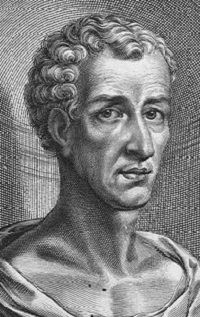 Lucian
Lucian
125-180 AD
Lucian of Samosata (c. 125 AD-after 180 AD) was an Assyrian rhetorician and satirist who wrote in the Greek language. He is noted for his witty and scoffing nature.
Few details of Lucian’s life can be verified with any degree of accuracy. He claimed to have been born in Samosata, in the former kingdom of Commagene, which had been absorbed by the Roman Empire and made part of the province of Syria. In his works, Lucian refers to himself as a “Syrian,” “Assyrian” and “barbarian,” perhaps indicating “he was from the Semitic and not the imported Greek population” of Samosata. His birthplace was recently lost when the Ataturk Dam project led to the inundation of the site.
Lucian almost certainly did not write all of the more than 80 works attributed to him – declamations, essays both laudatory and sarcastic, satiric epigrams, comic dialogues and symposia with a satirical cast, studded with quotations in alarming contexts and allusions set in an unusual light, designed to be surprising and provocative. His name added luster to any entertaining and sarcastic essay: More than 150 surviving manuscripts attest to his continued popularity. The first printed edition of a selection of his works was issued in Florence in 1499. His best-known works are: “A True Story” (a romance, patently not “true” at all, which he admits in his introduction to the story), Dialogues of the Gods and Dialogues of the Dead.
Lucian was trained as a rhetorician, a vocation in which one pleads in court, composing pleas for others and teaching the art of pleading. Lucian’s practice was to travel about, giving amusing discourses and witty lectures improvised on the spot, somewhat as a rhapsode had done in declaiming poetry at an earlier period. In this way, Lucian travelled through Ionia, mainland Greece, Italy and even to Gaul, winning much wealth and fame.
Source: http://en.wikipedia.org/wiki/Lucian
 Bibliography
Bibliography
Press your browser’s BACK button to return to the previous page.
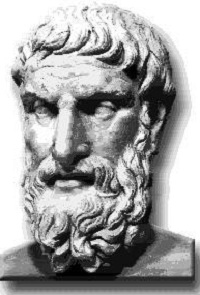 Lucretius
Lucretius
99-54 BC
Titus Lucretius Carus (ca. 99 BC-ca. 55 BC) was a Roman poet and philosopher. His only known work is the epic philosophical poem on Epicureanism, “De rerum natura,” translated into English as “On the Nature of Things” or “On the Nature of the Universe.”
Very little is known about Lucretius’ life; the only certain fact is that he was either a friend or a client of Gaius Memmius, to whom he dedicated “De Rerum Natura.”
Another piece of information is found in a letter Cicero wrote to his brother, Quintus, in February 54 BC: “The poems of Lucretius are as you write: They exhibit many flashes of genius, and yet show great mastership.” Apparently, by February 54 BC, both Cicero and his brother had read “De Rerum Natura.” However, internal evidence from the poem suggests that it was published without a final revision, possibly due to its author’s untimely death. If this is true, Lucretius must have been dead by February 54 BC.
Source: http://en.wikipedia.org/wiki/Lucretius
 Bibliography
Bibliography
Press your browser’s BACK button to return to the previous page.
 Baz Luhrmann
Baz Luhrmann
1962-
Mark Anthony “Baz” Luhrmann (born September 17, 1962) is an Australian film director, screenwriter and producer best known for The Red Curtain Trilogy, which includes his films: Strictly Ballroom, William Shakespeare’s Romeo and Juliet and Moulin Rouge.
Luhrmann was born in Sydney to a mother who was a ballroom dance teacher and dress shop owner, and Leonard Luhrmann, a farmer. He was raised in Herons Creek, a tiny rural settlement in northern New South Wales, where his father ran a petrol station and a movie theatre, both of which would influence his son’s filmmaking career. He attended St. Joseph’s Hasting Regional School, Port Macquarie, from 1975-1978 and Balgowlah Boys Campus. He attended Year 11 at Narrabeen Sports High School in Sydney, performing in the school’s version of Shakespeare’s Henry IV, Part 1. He graduated from NIDA in 1985.
Source: http://en.wikipedia.org/wiki/Baz_Luhrmann
 Bibliography
Bibliography
Press your browser’s BACK button to return to the previous page.
 Sidney Lumet
Sidney Lumet
1924-2011
Sidney Lumet (June 25, 1924-April 9, 2011) was an American director, producer and screenwriter with more than 50 films to his credit. He was nominated for the Academy Award as Best Director for 12 Angry Men (1957), Dog Day Afternoon (1975), Network (1976) and The Verdict (1982).
The Encyclopedia of Hollywood states that Lumet was one of the most prolific directors of the modern era, making more than one movie per year on average since his directorial debut in 1957.
Lumet began his career as an Off-Broadway director, then became a highly efficient TV director. His first movie was typical of his best work: A well-acted, tightly written, deeply considered “problem picture,” 12 Angry Men (1957). From that point on, Lumet divided his energies among other idealistic problem pictures along with literate adaptations of plays and novels, big stylish pictures, New York-based black comedies and realistic crime dramas, including Serpico and Prince of the City. As a result of directing 12 Angry Men, he was also responsible for leading the first wave of directors who made a successful transition from TV to movies.
In 2005, Lumet received an Academy Award for Lifetime Achievement. Two years later, he concluded his career with the acclaimed drama, Before the Devil Knows You’re Dead (2007).
Lumet died aged 86 on April 9, 2011, in his residence in Manhattan, New York, from lymphoma.
Source: http://en.wikipedia.org/wiki/Sidney_Lumet
 Bibliography
Bibliography
Press your browser’s BACK button to return to the previous page.
 John Lydgate
John Lydgate
c. 1370-c. 1451
Little is known of John Lydgate’s life. He was a professed disciple of Geoffrey Chaucer and for many years his fame rivaled Chaucer’s. Lydgate became a Benedictine monk at Bury St. Edmund’s in about 1385 and he was ordained a priest in 1397. He studied at Oxford. His early poems, written before 1412, include “The Temple of Glas,” perhaps composed to be read at a wedding ceremony, and “Reson and Sensuallyte,” an adaptation of part of a long French allegory.
Lydgate’s first major poem was his “Troy Book” (1412-1420), based on the Historia Troiana of Guido delle Colonne (1287). It contains more than 30,000 lines and was dedicated to Henry V. The poet became associated with Chaucer’s son, Thomas, who entertained a number of prominent persons, including Humphrey of Gloucester, John Tiptoft, Thomas Montague and William de la Pole, at his estate not far from Oxford. Between 1420 and 1422, Lydgate wrote “The Siege of Thebes,” a tribute to Geoffrey Chaucer and, in form, a continuation of The Canterbury Tales. Probably at the request of Humphrey, Lydgate wrote The Serpent of Division (1422), a prose life of Julius Caesar designed as a warning against division in the kingdom.
In 1423, Lydgate became prior of Hatfield. During the next few years he wrote a number of “mummings,” or allegorical performances, in which various figures appeared and performed symbolic actions while a narrator described the proceedings in verse. In about 1426, the poet went to Paris for a two-year visit. There, he wrote his verse adaptation of Deguileville’s Pelerinage de la vie humaine (original revised about 1355) for Thomas Montague, Earl of Salisbury. This long allegory of salvation contains more than 24,000 lines. He also composed an English version of The Danse Macabre.
Between 1431 and 1439, Lydgate worked on his masterpiece, The Fall of Princes, written for Duke Humphrey. Giovanni Boccaccio had written a series of “tragedies” – or stories of great men who, through a weakness, subjected themselves to fortune and thus fell – in a collection called De casibus virorum illustrium (1355-1360). These stories had been adapted into French prose by Laurent de Premierfait. Lydgate turned Laurent’s version into an enormously long and popular English poem in nine books.
In addition to these works, Lydgate also wrote saints’ lives, devotional poems and occasional pieces.
Source: http://www.answers.com/topic/john-lydgate
 Bibliography
Bibliography
Press your browser’s BACK button to return to the previous page.
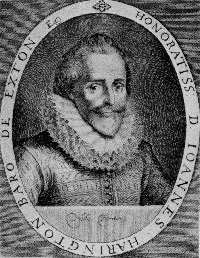 John Lyly
John Lyly
1554-1606
John Lyly was born in Kent in 1554. He was brought up in Canterbury, where he likely attended the King’s School at the same time as Christopher Marlowe. Lyly received the A.M. degree at Magdalen College, University of Oxford, in 1575. After failed petitions for support from Lord Burghley for a fellowship, Lyly removed to London.
He became instantly famous with the publication of the prose romance, Euphues, or the Anatomy of Wit (1578), and its sequel, Euphues and His England (1580). “Euphues” is Greek for “graceful.”
In 1583, Lyly married Beatrice Browne, a Yorkshire heiress. The same year, he gained control of the first Blackfriars Theatre. He wrote several prose comedies for children’s companies, all geared toward the courtly audience. These plays included: Campaspe (1584), Sapho and Phao (early 1580s), Endymion: The Man in the Moon (1586-87), Love’s Metamorphosis (1589), Midas (1589) and Mother Bombie (1589). Lyly’s only play in verse was the comedy, The Woman in the Moone (1594). Lyly’s contribution to the Martin Marprelate controversy, on the bishops’ side, was 1589’s Pap with an Hatchet.
Lyly served as an MP three times, the first of which was for Hindon in Wiltshire, in 1589. He spent most of the remainder of his life at his wife’s home in Mexborough, Yorkshire.
Source: http://www.luminarium.org/renlit/lylybio.htm
 Bibliography
Bibliography
Press your browser’s BACK button to return to the previous page.
 Adrian Lyne
Adrian Lyne
1941-
Adrian Lyne (born March 4, 1941, in Peterborough, then in Northamptonshire, England) is an English filmmaker and producer. He is best known for directing films that focus on sexually charged characters and often uses natural light, a fog machine and other effects to create eroticized atmospheres. He was educated at Highgate School.
He began working in film after directing a number of television commercials. He directed the music video for “Maniac,” the theme song from Flashdance written by Michael Sembello. He received a nomination for Academy Award for Best Director in 1988 for Fatal Attraction.
Source: http://en.wikipedia.org/wiki/Adrian_Lyne